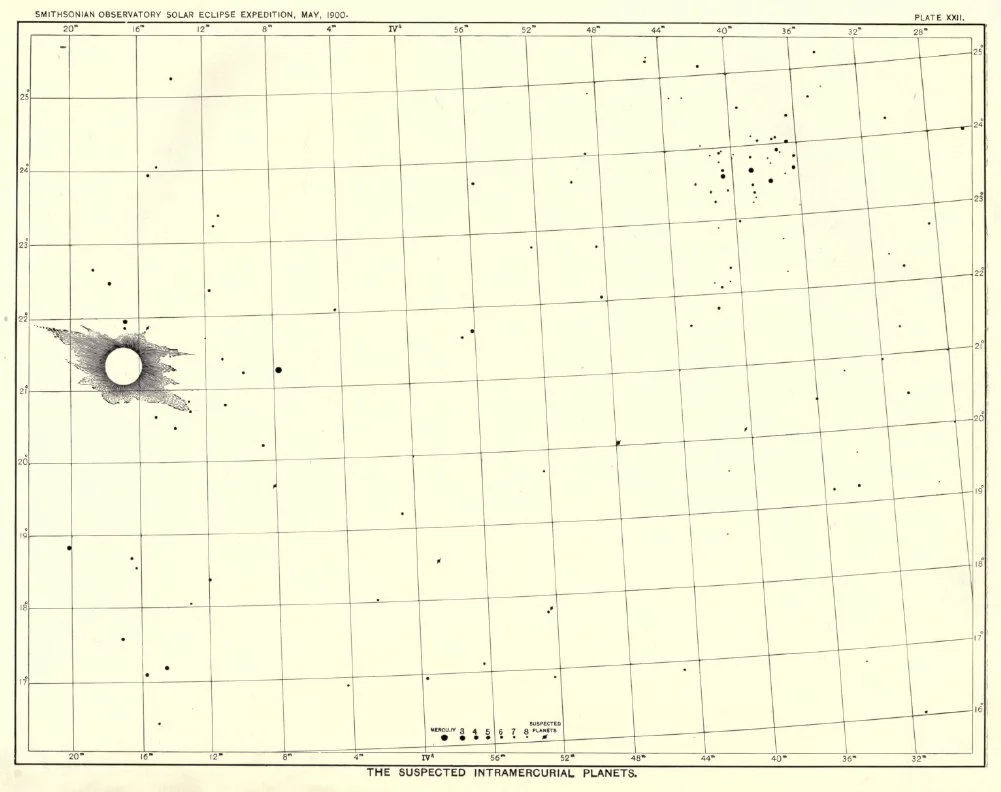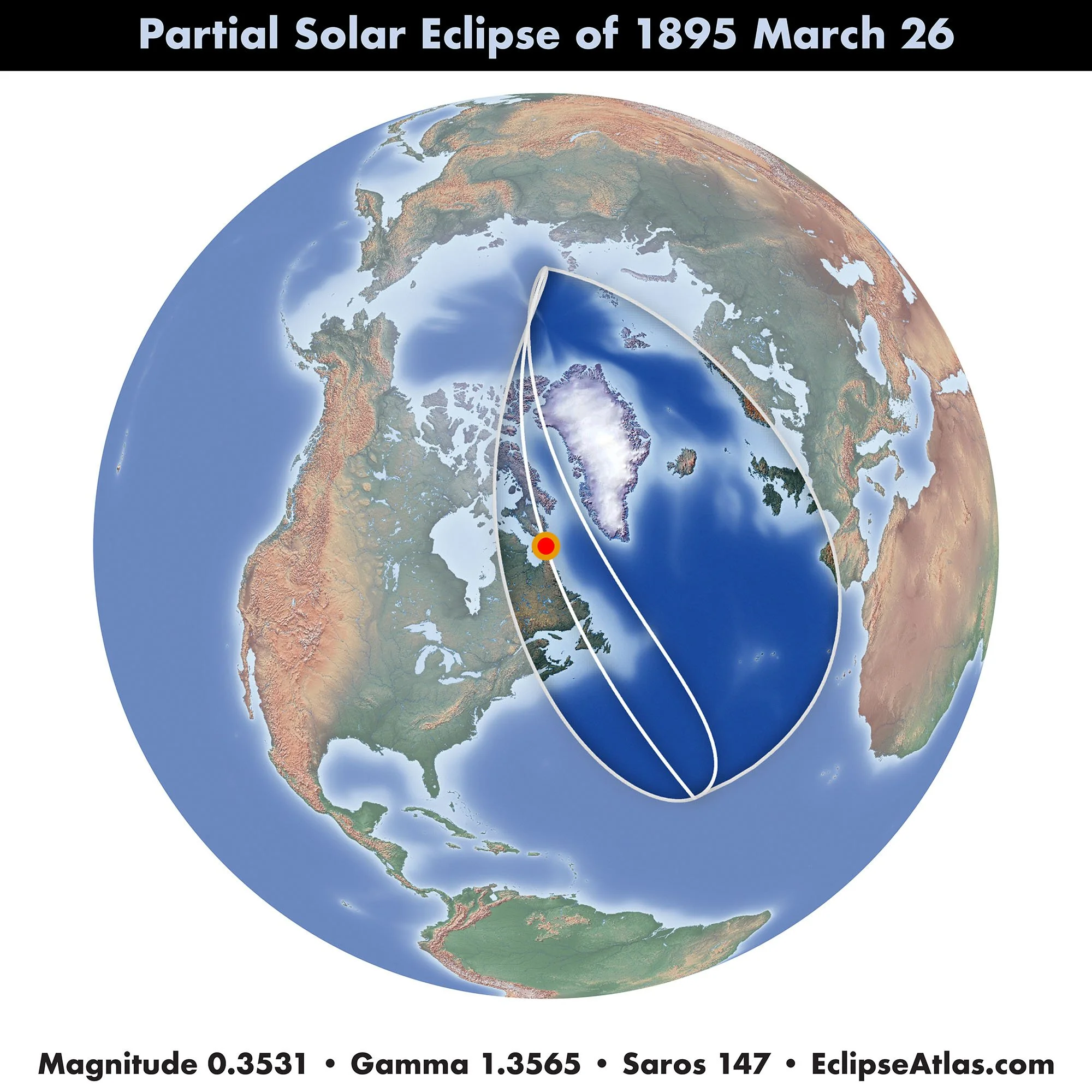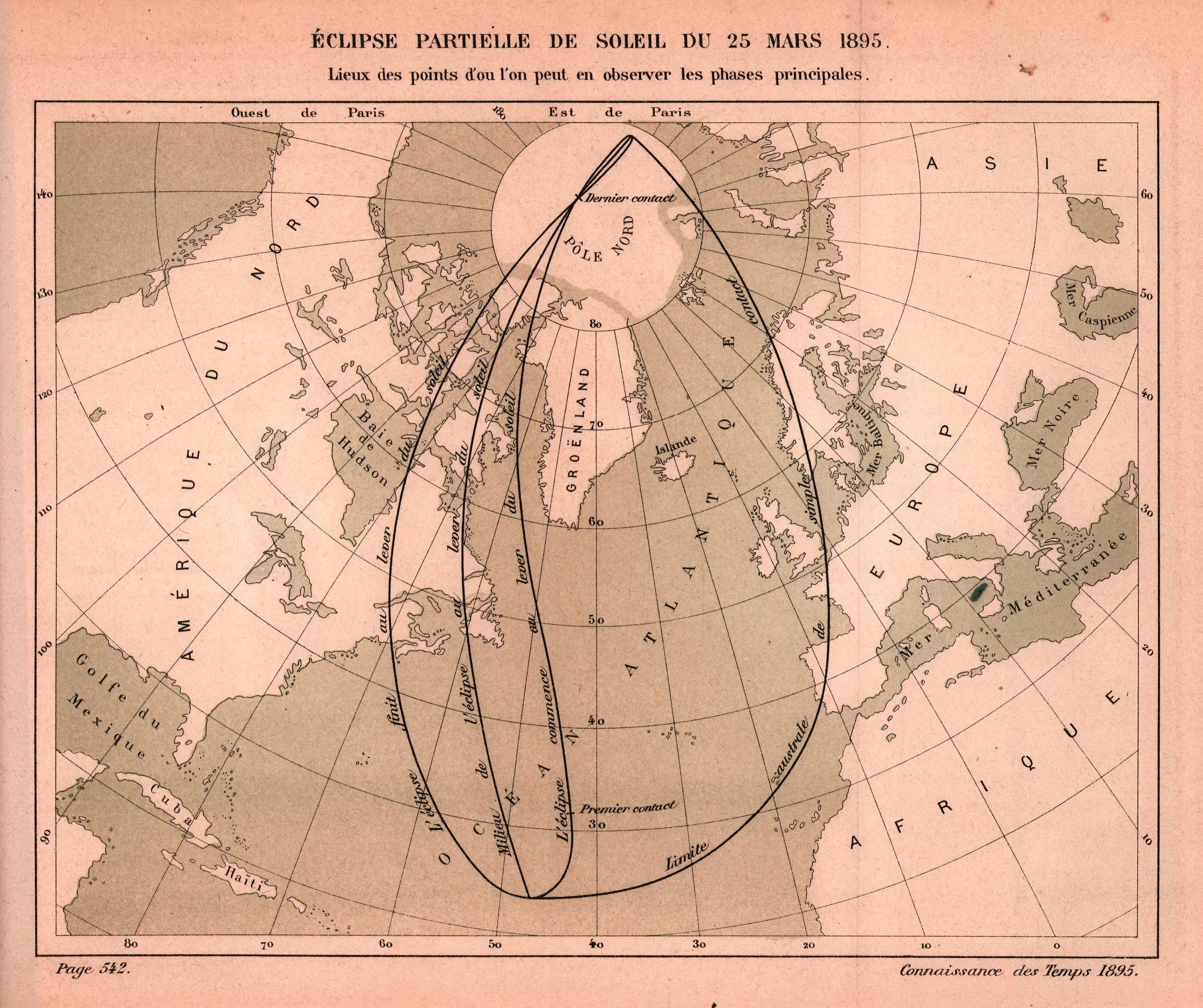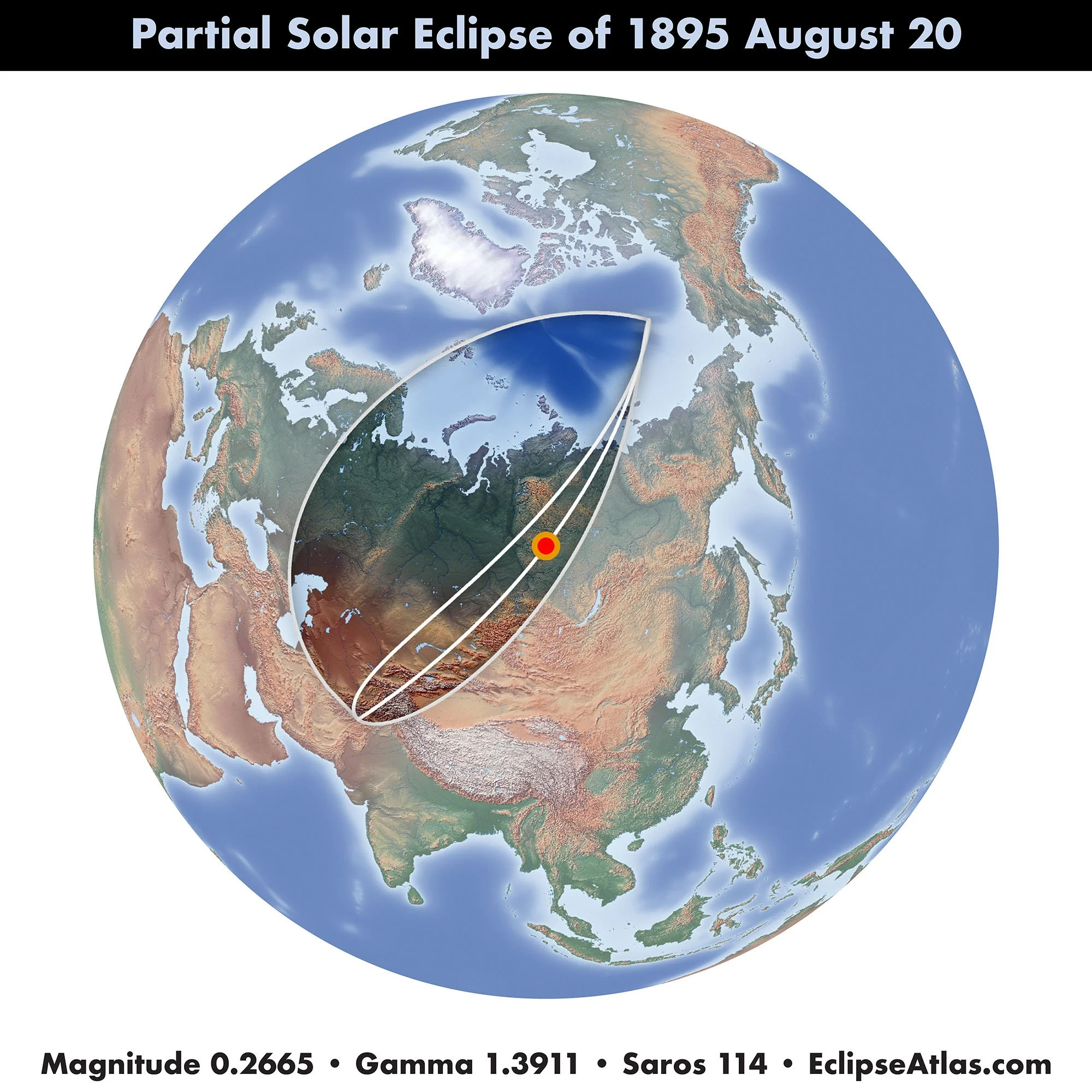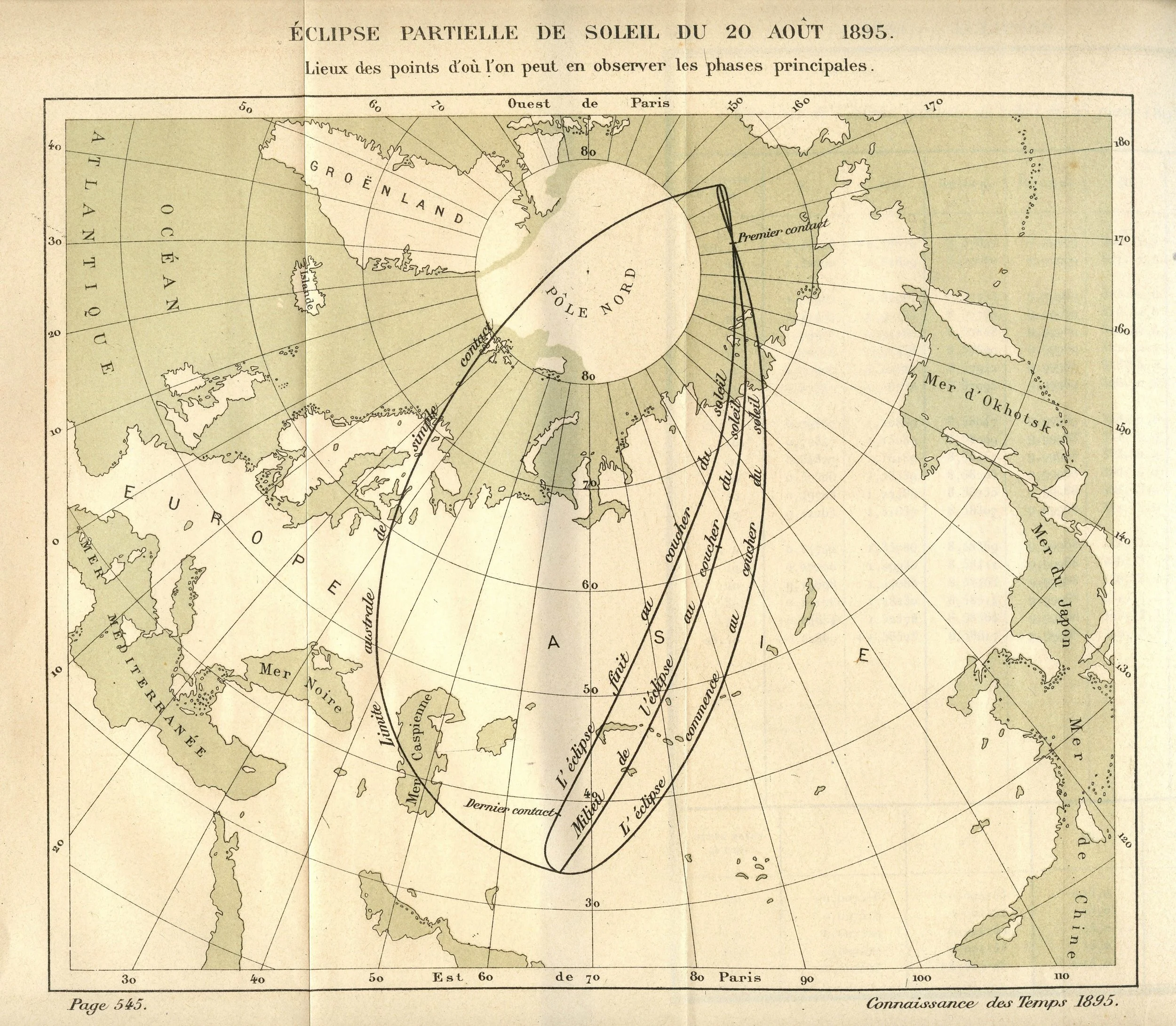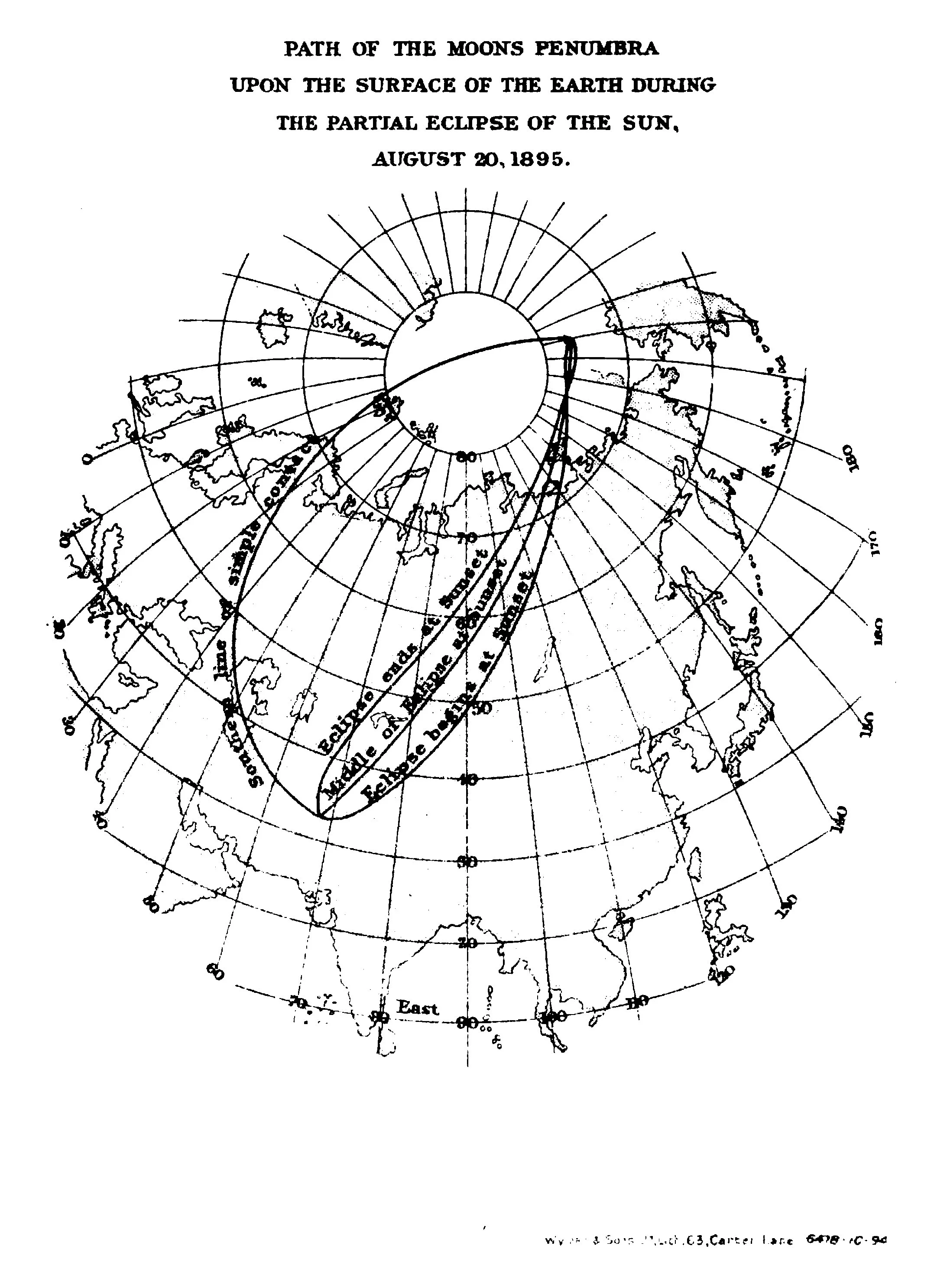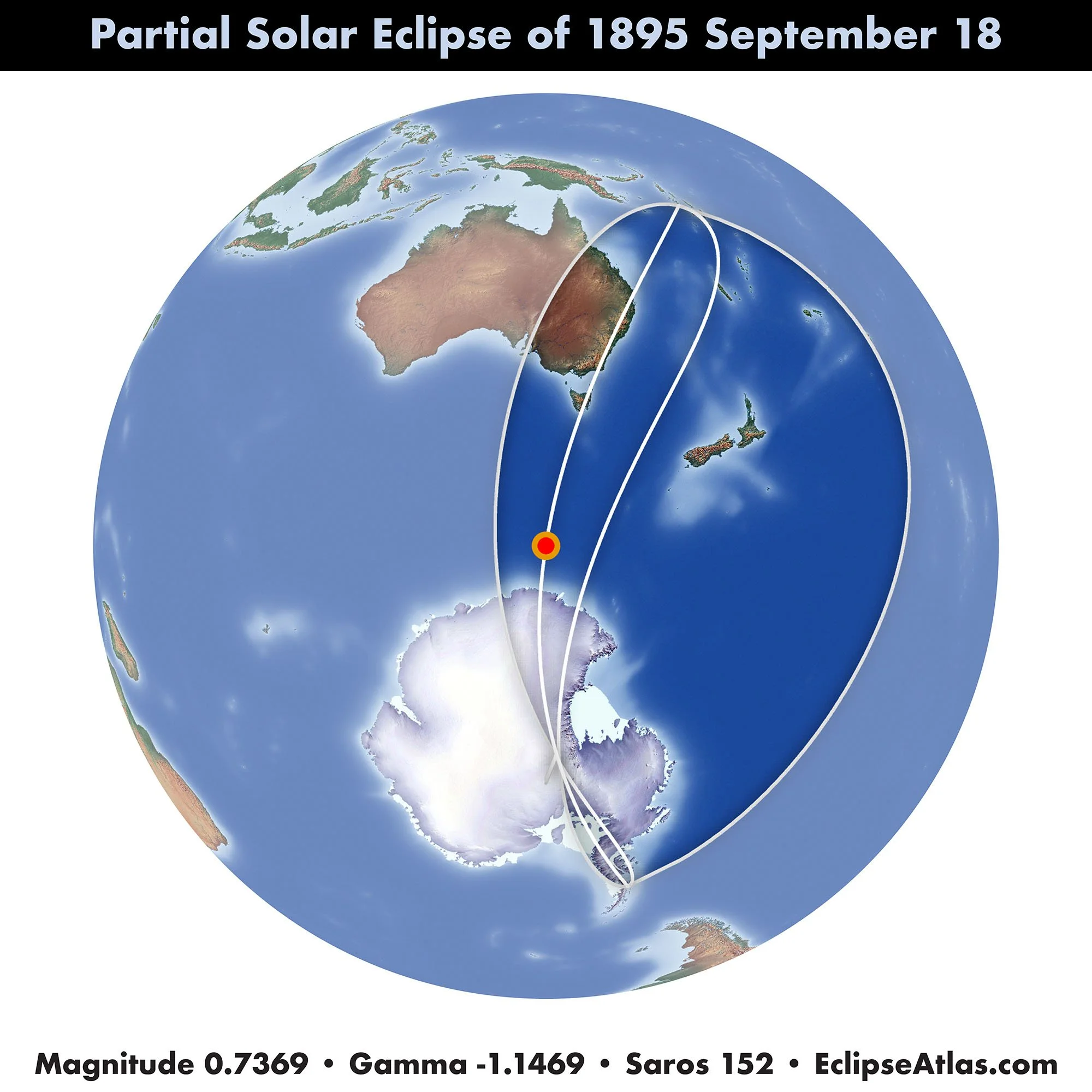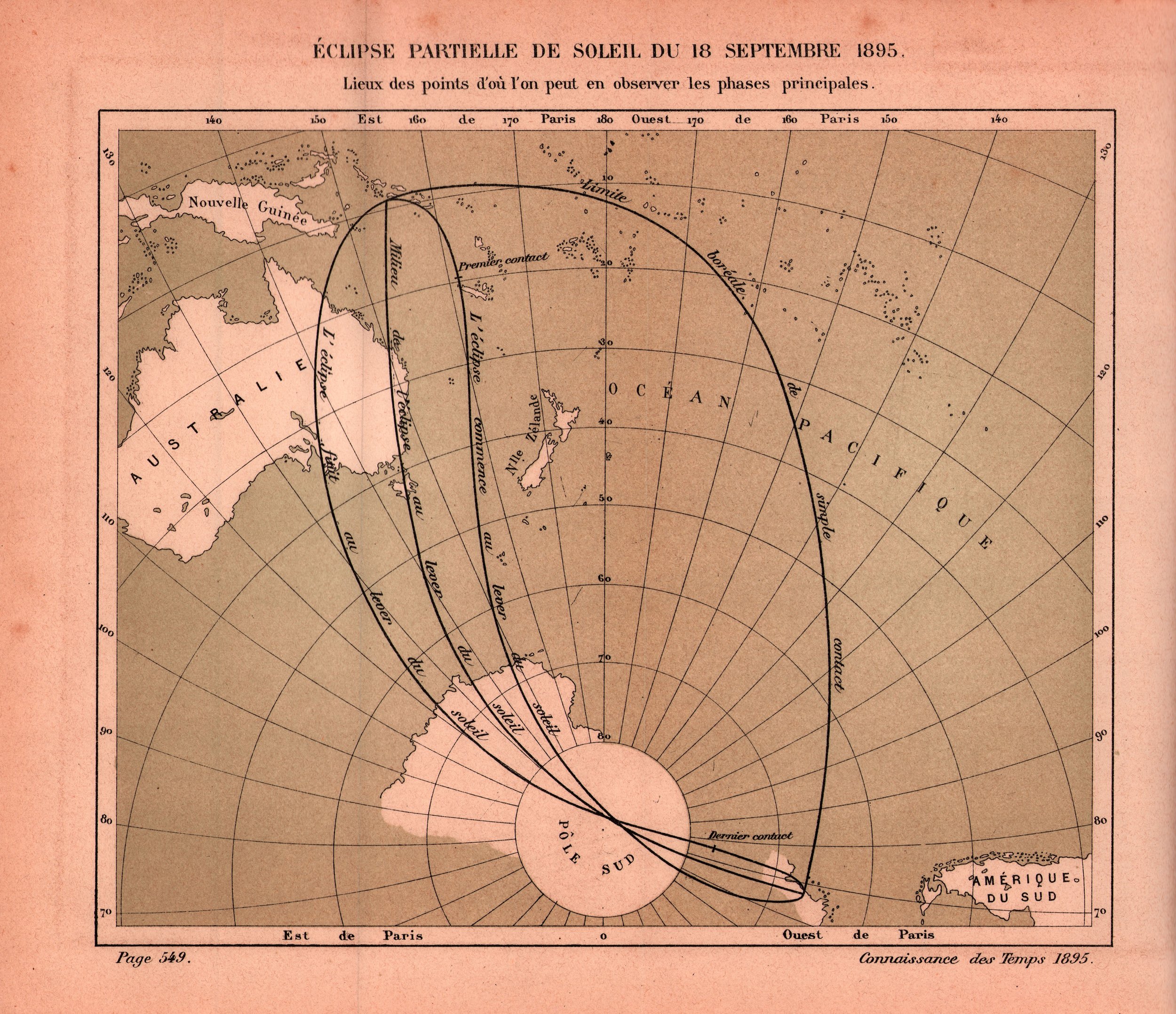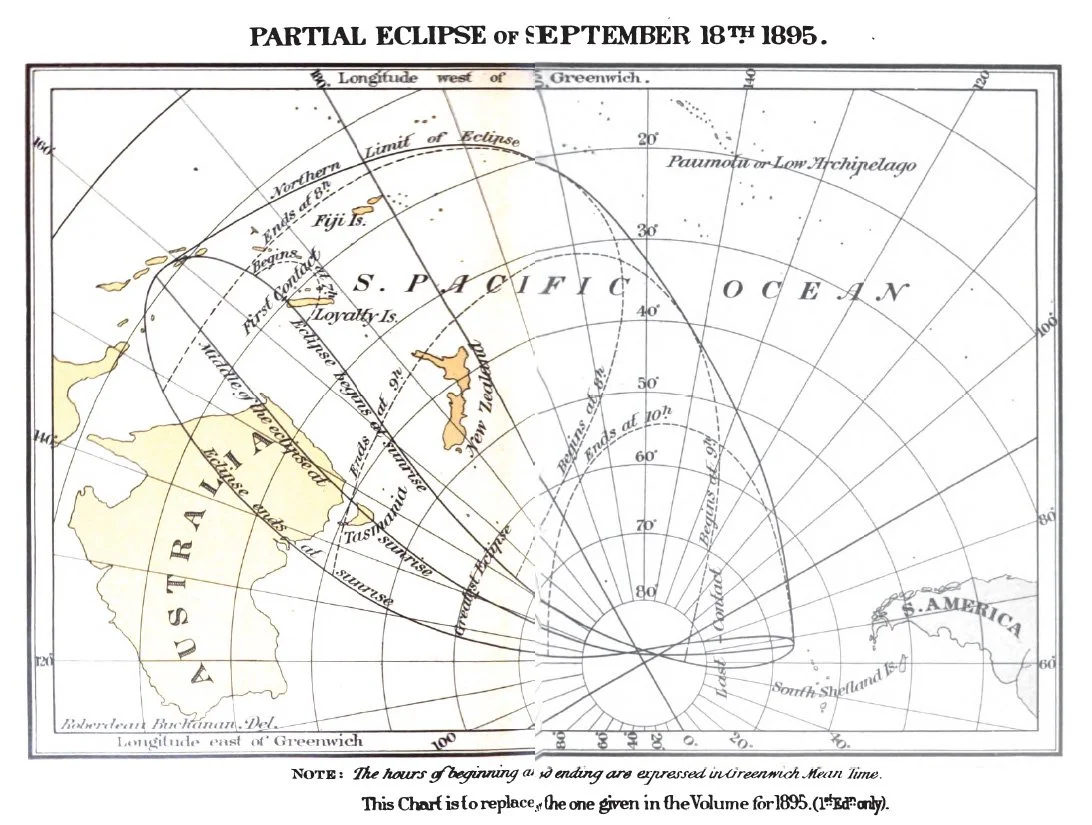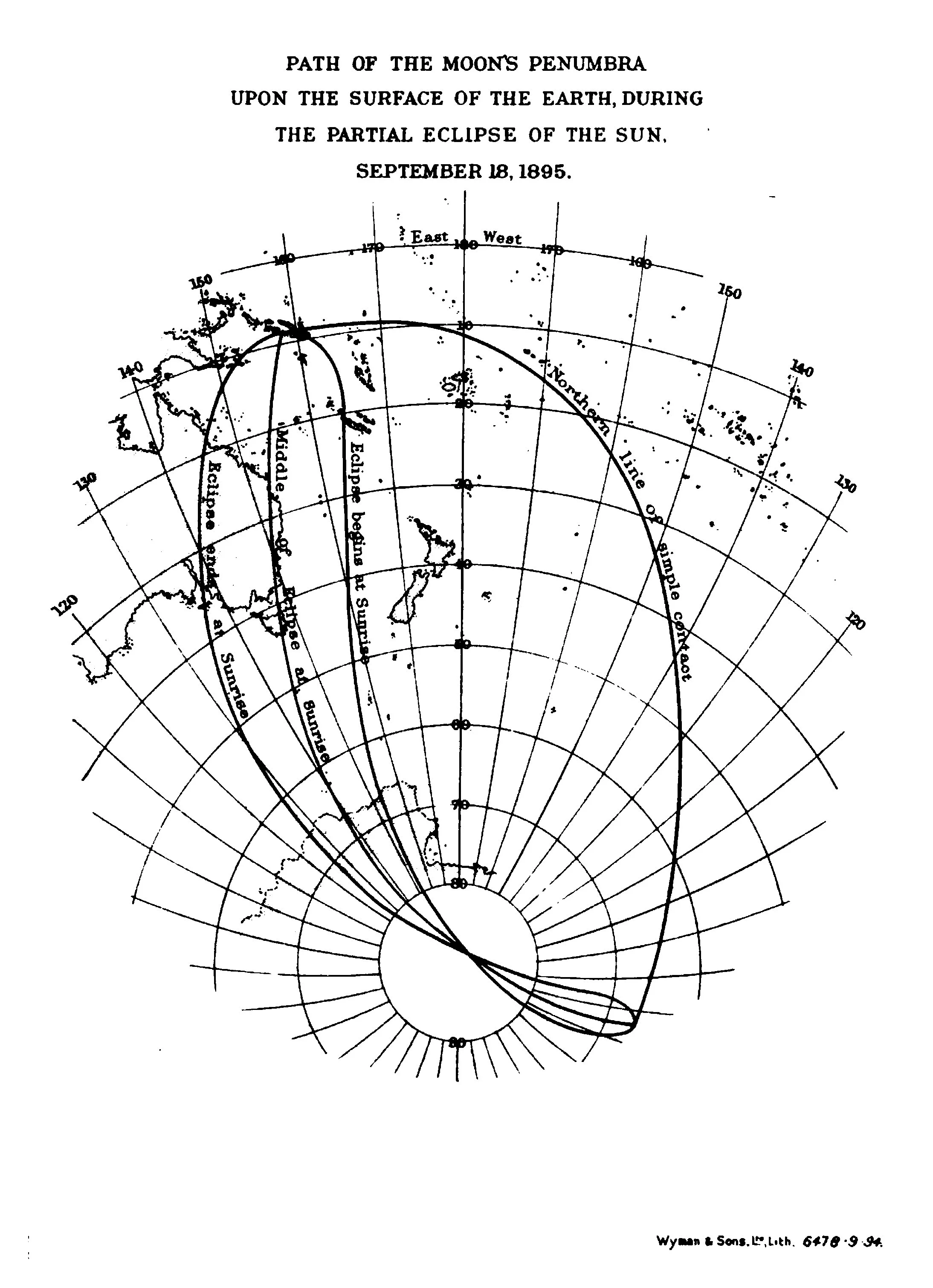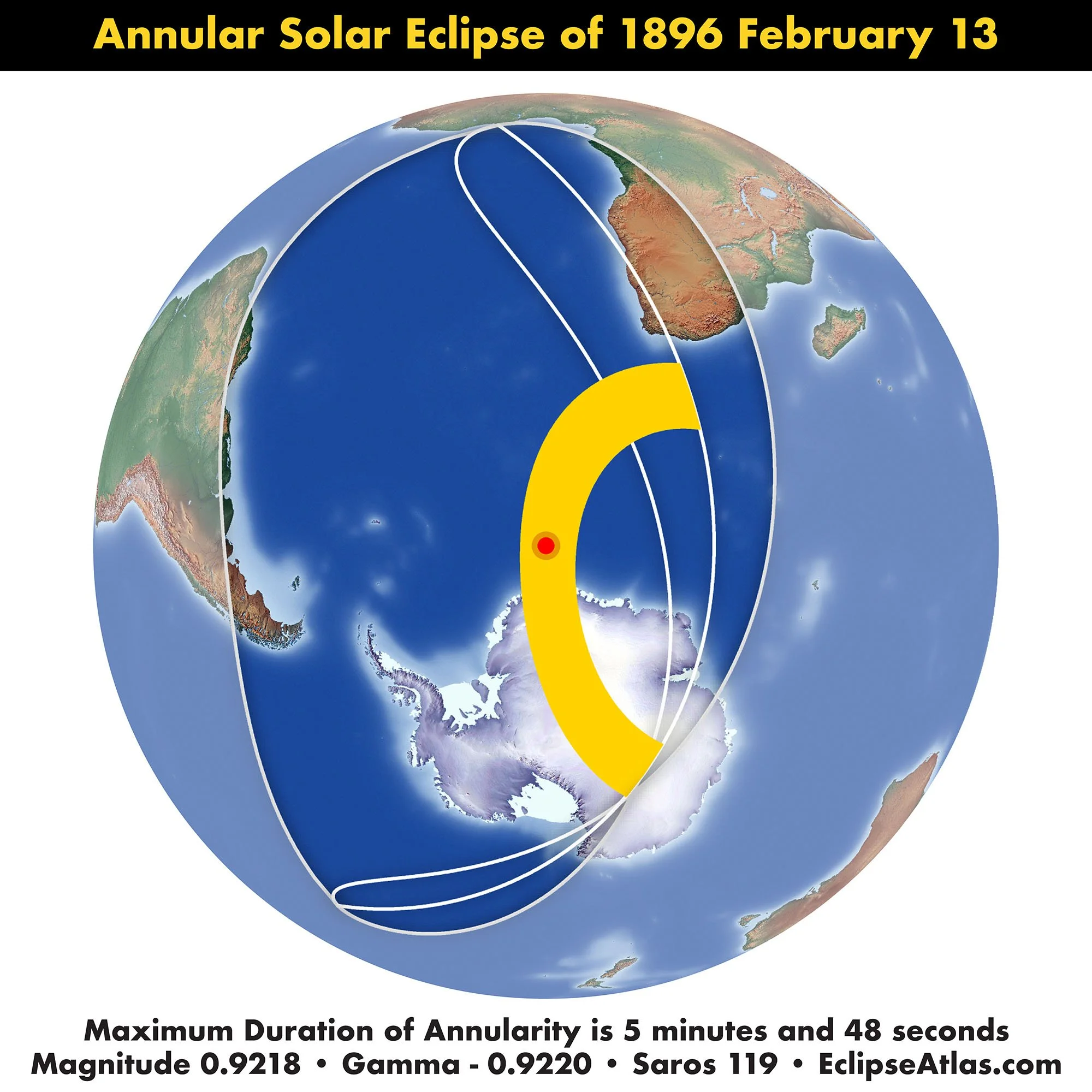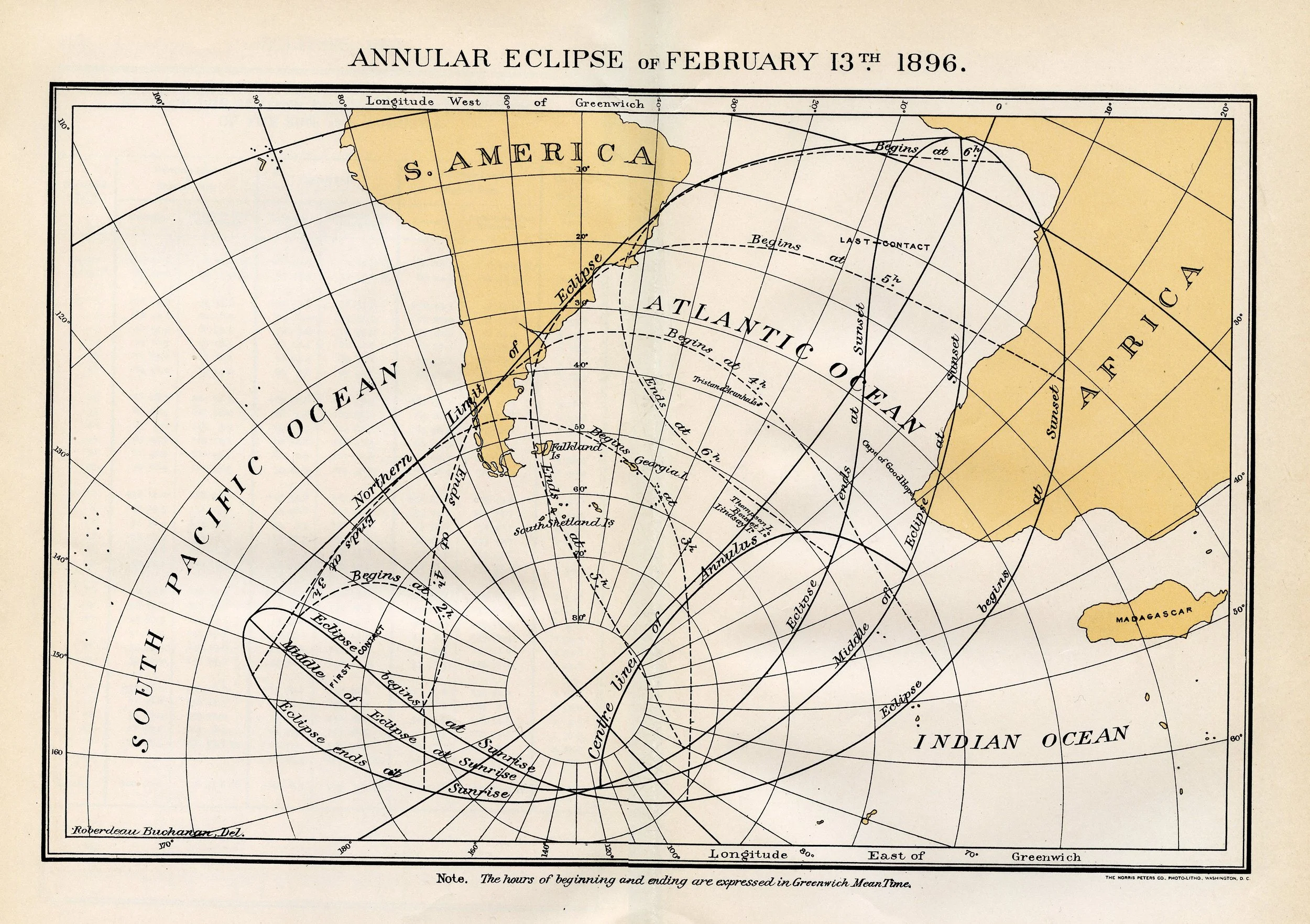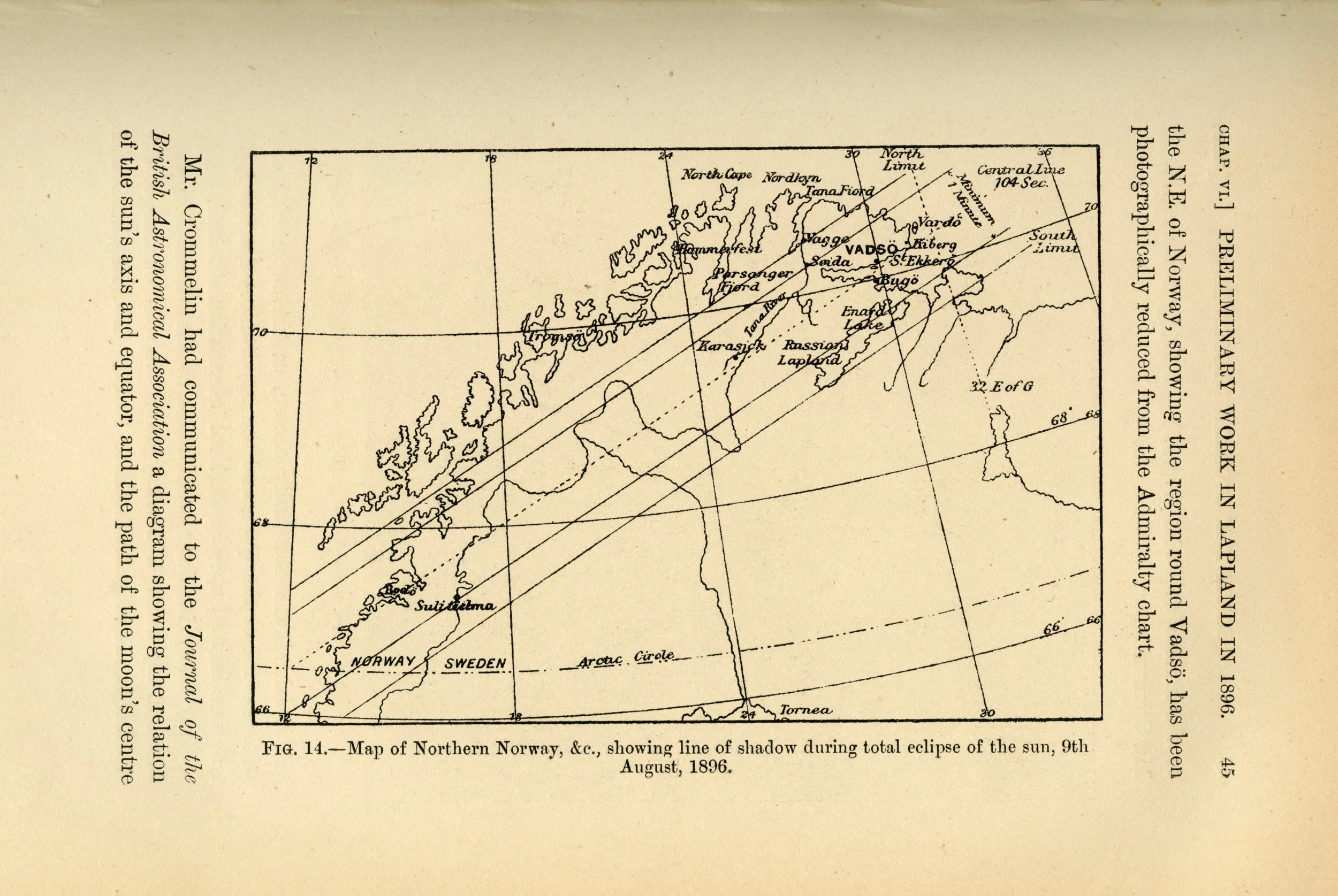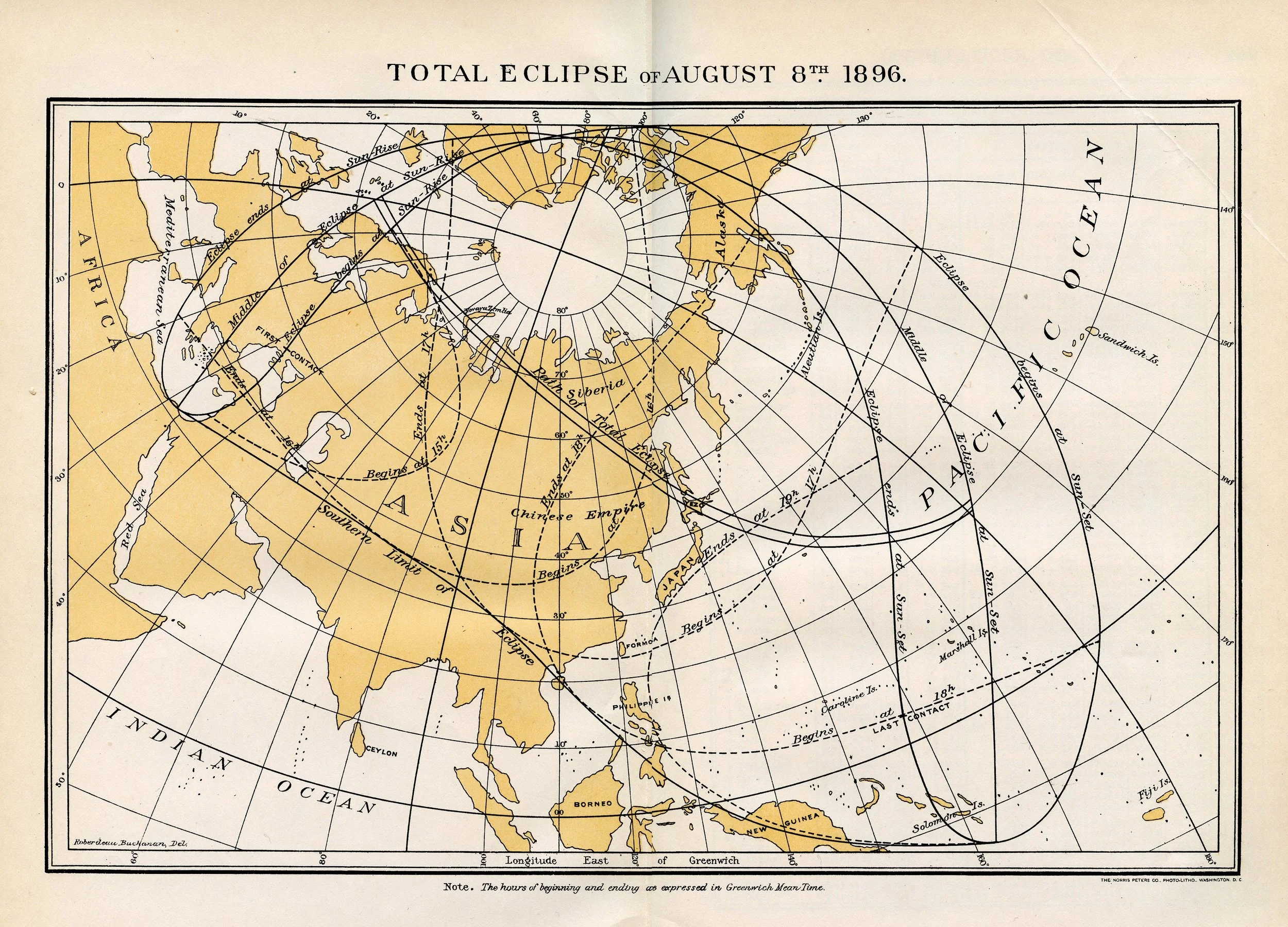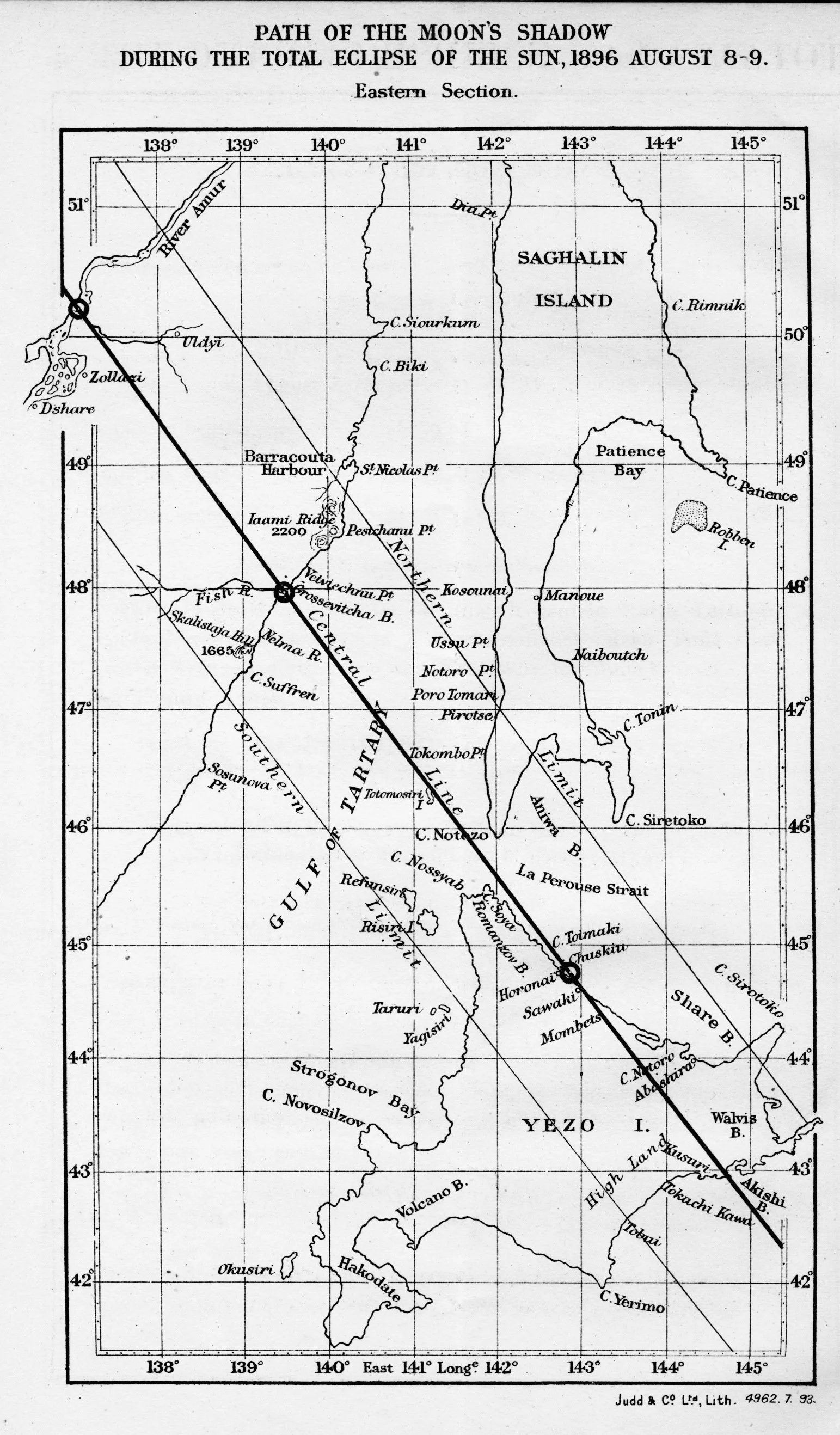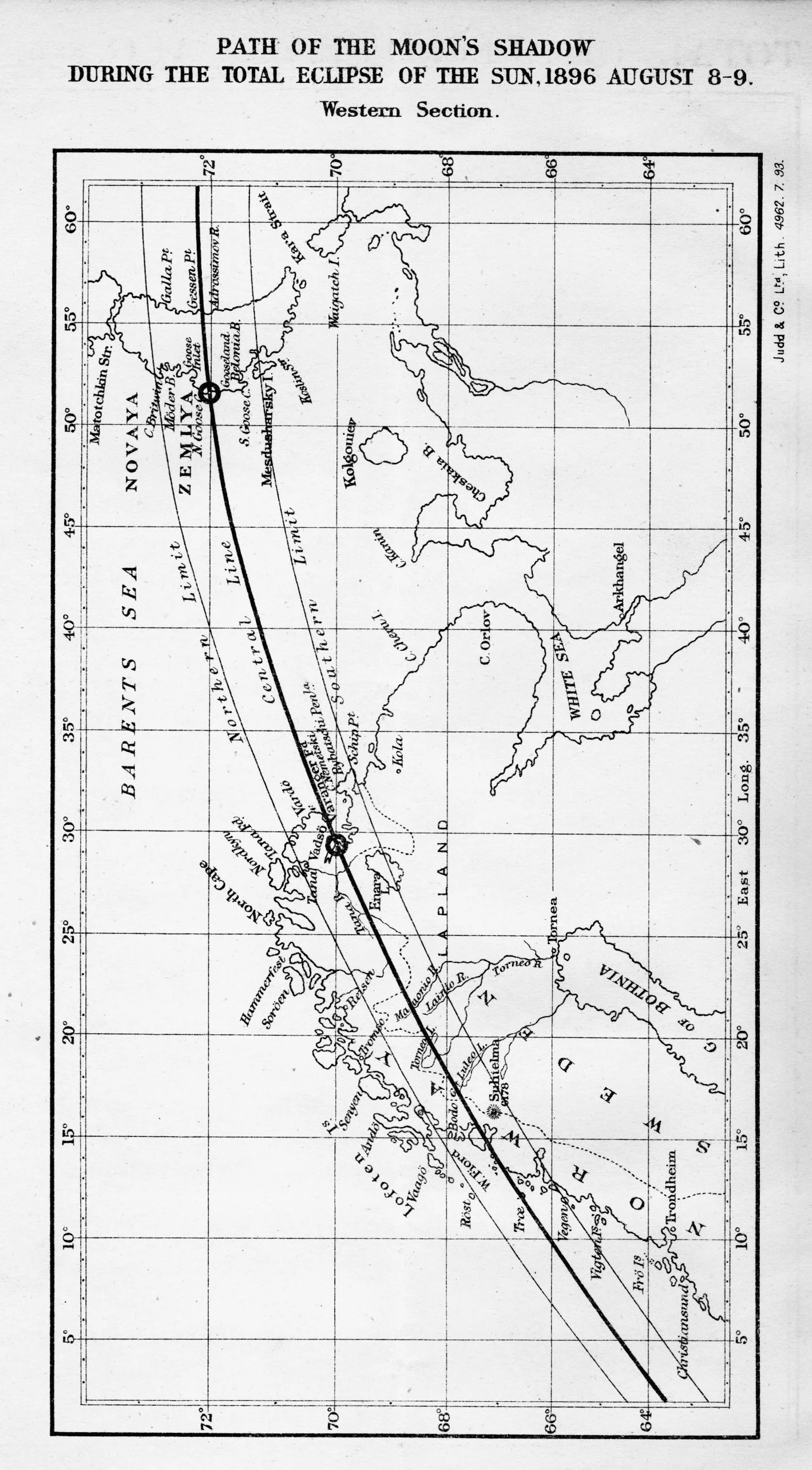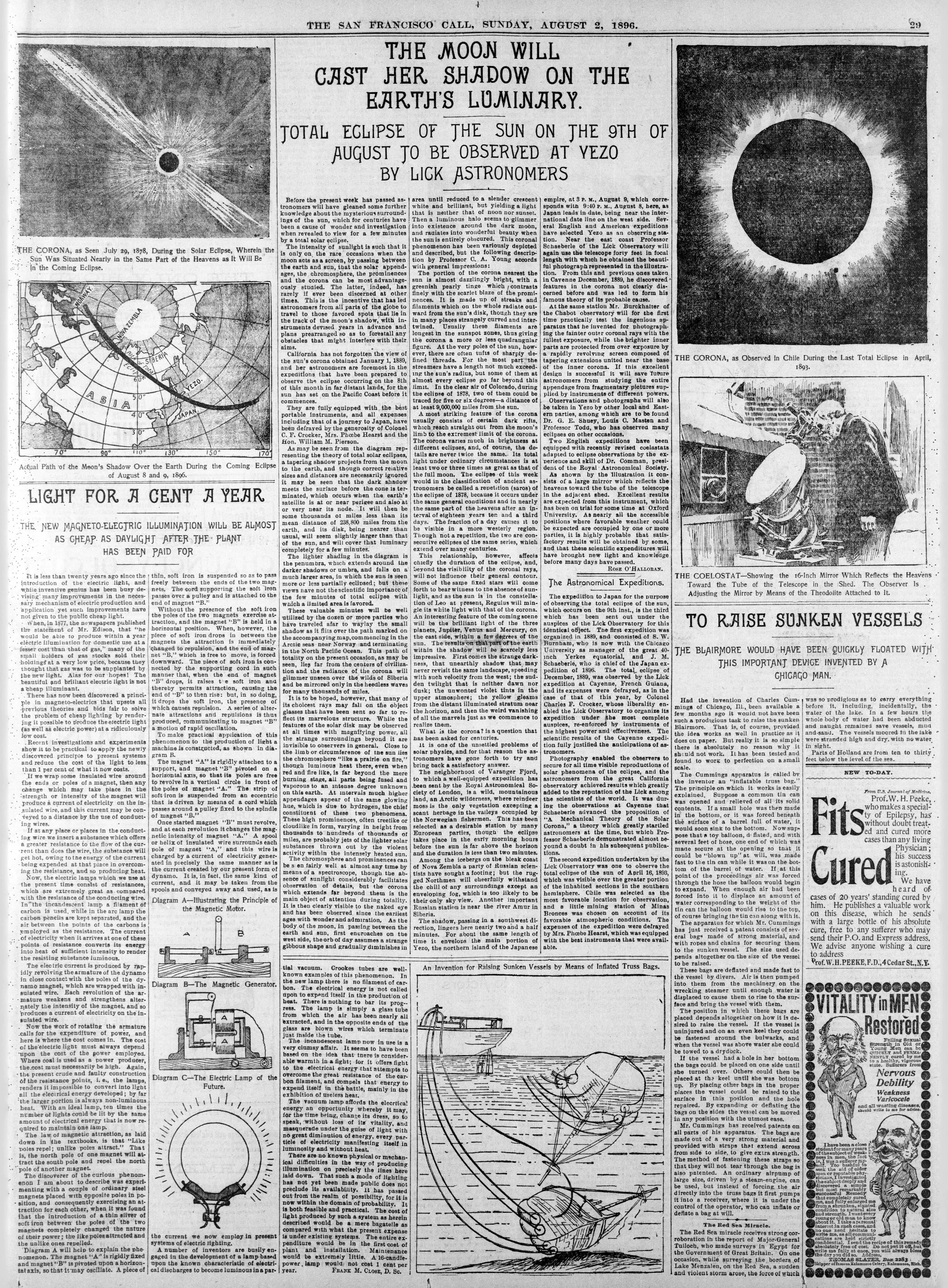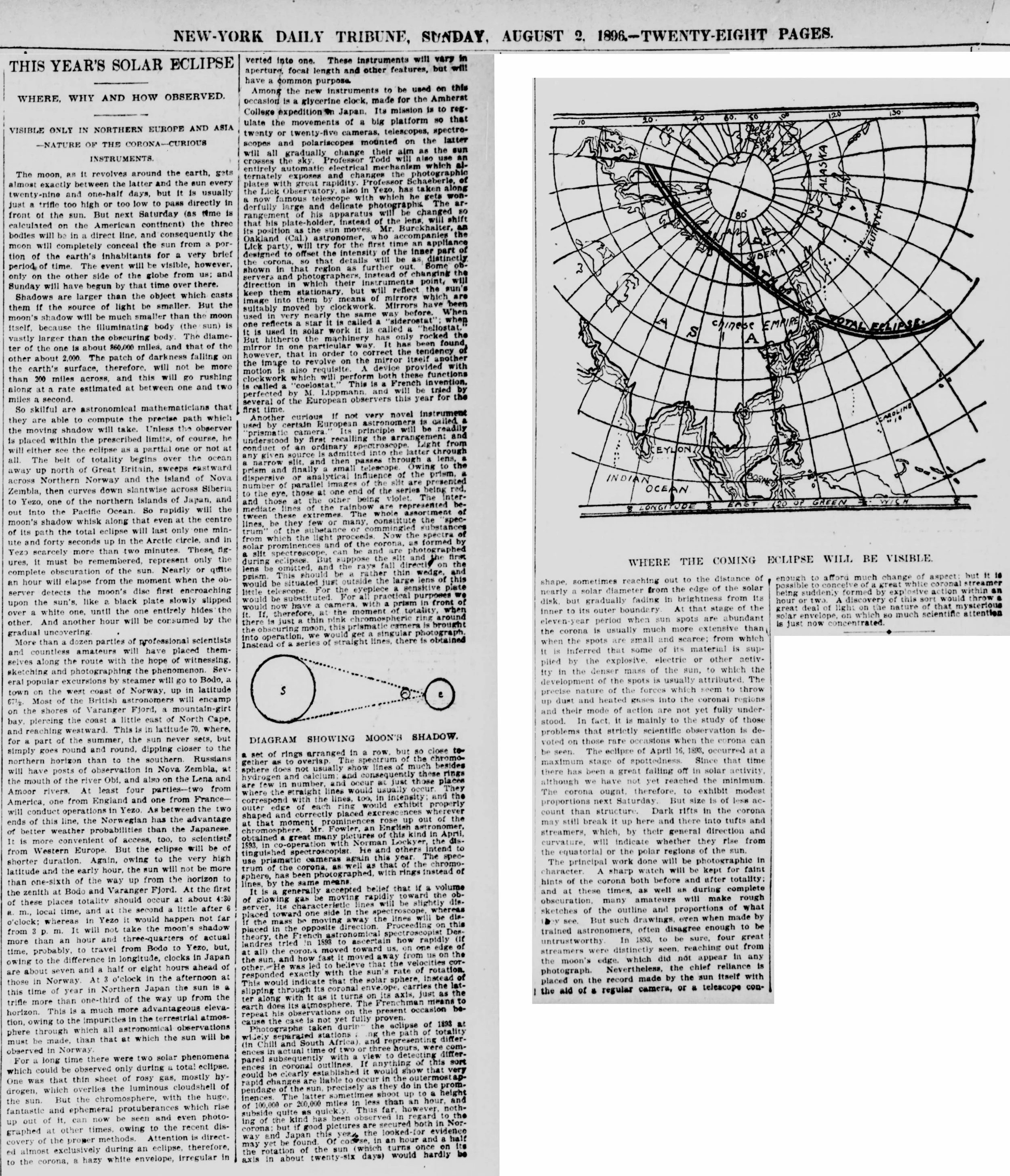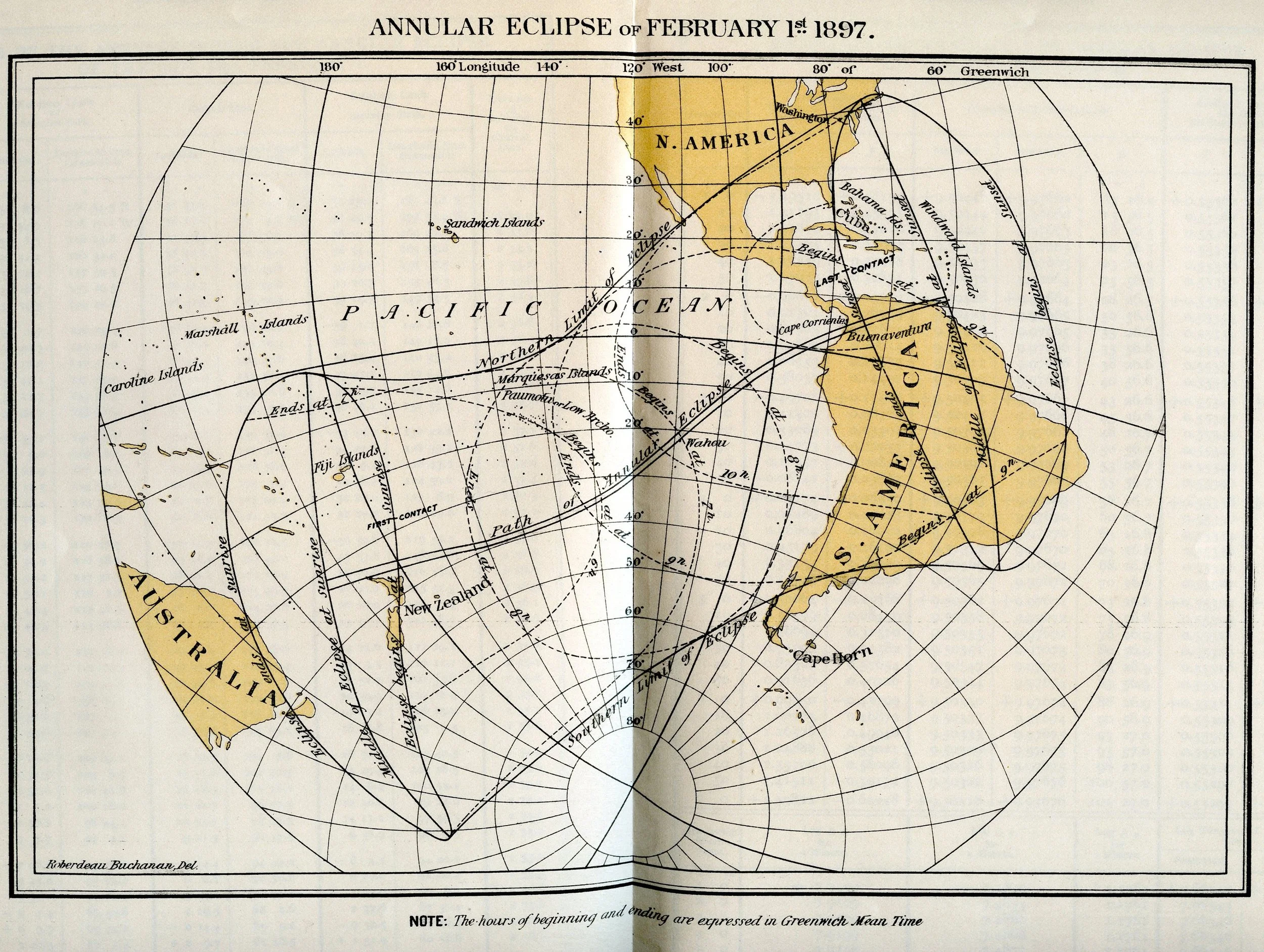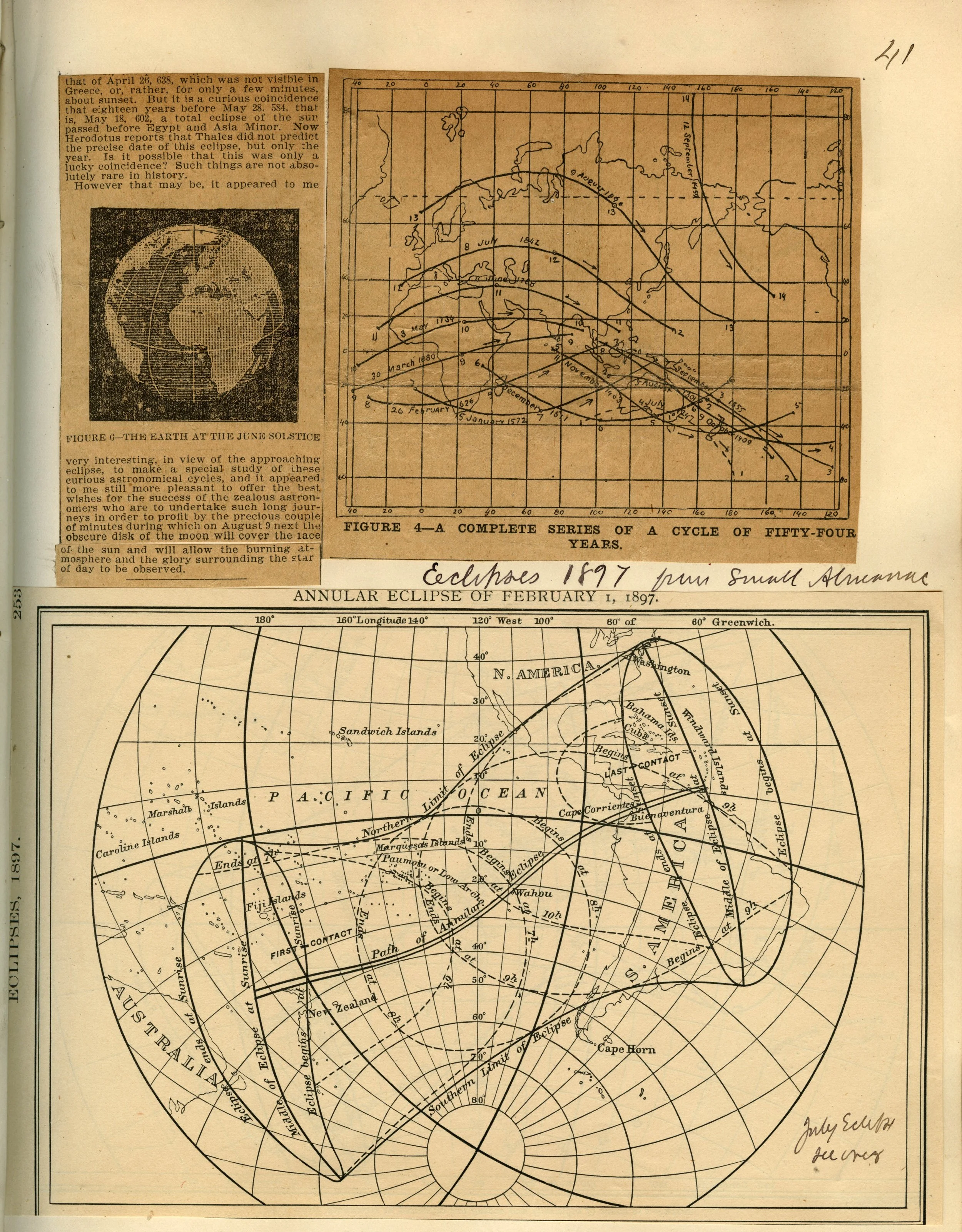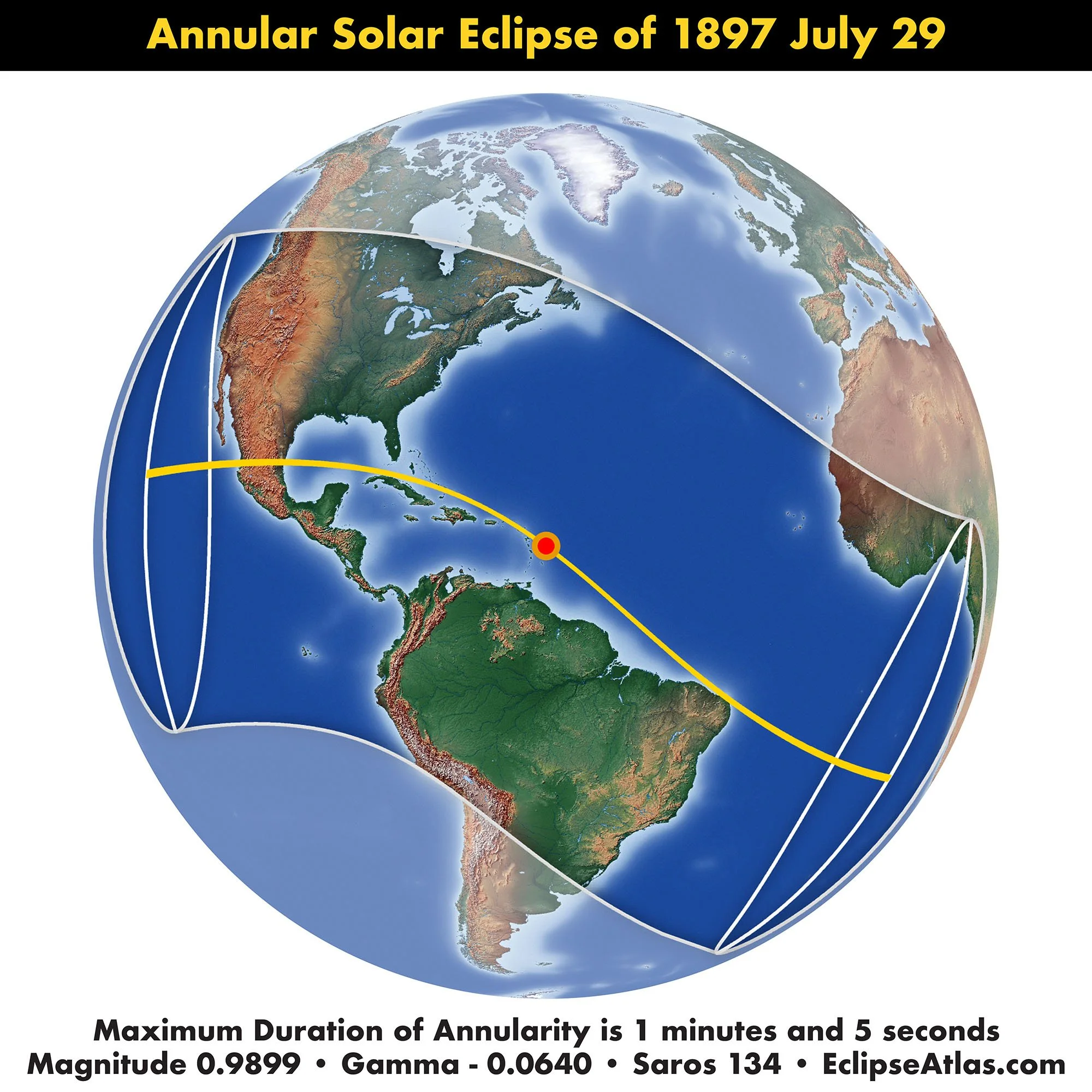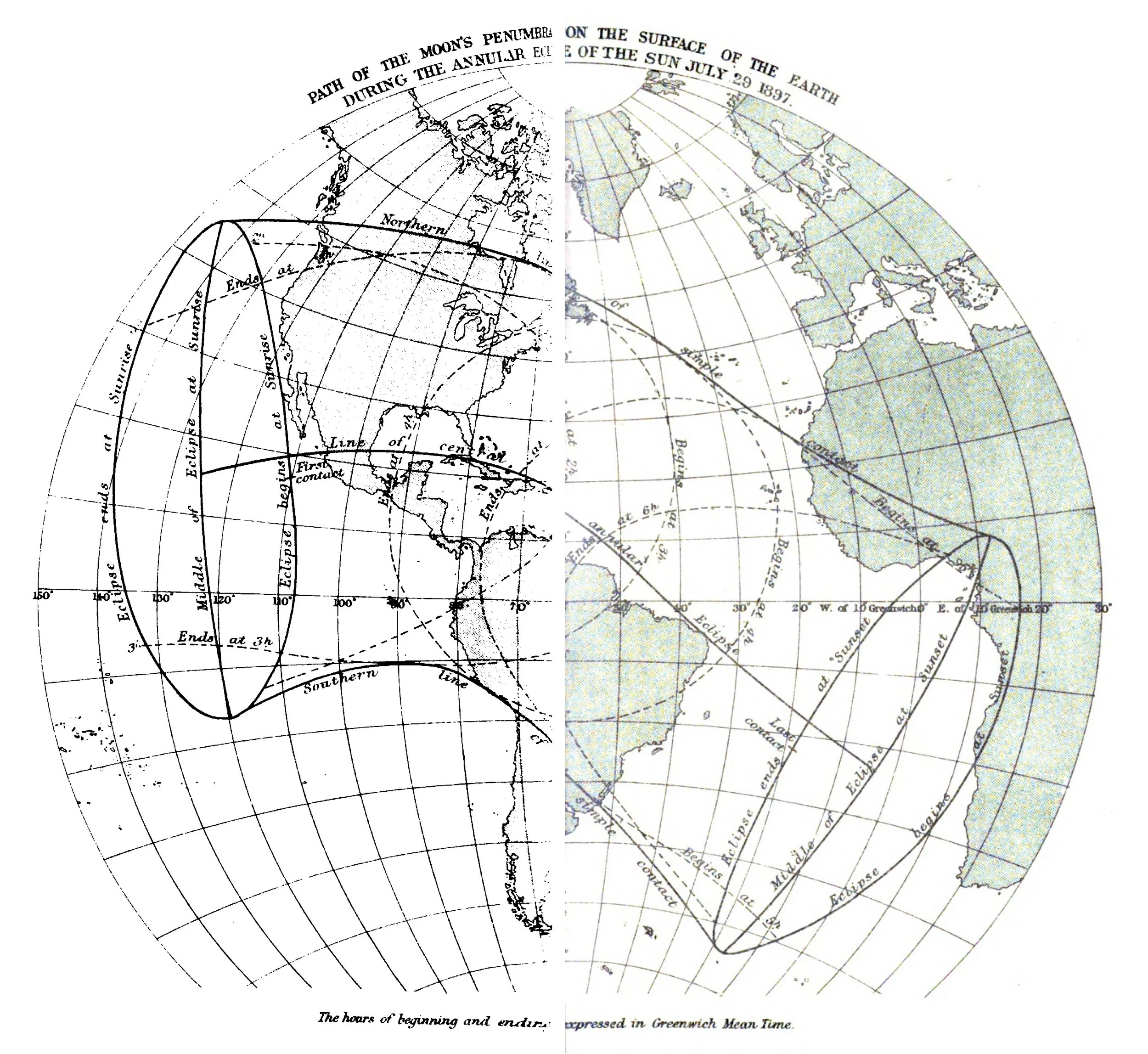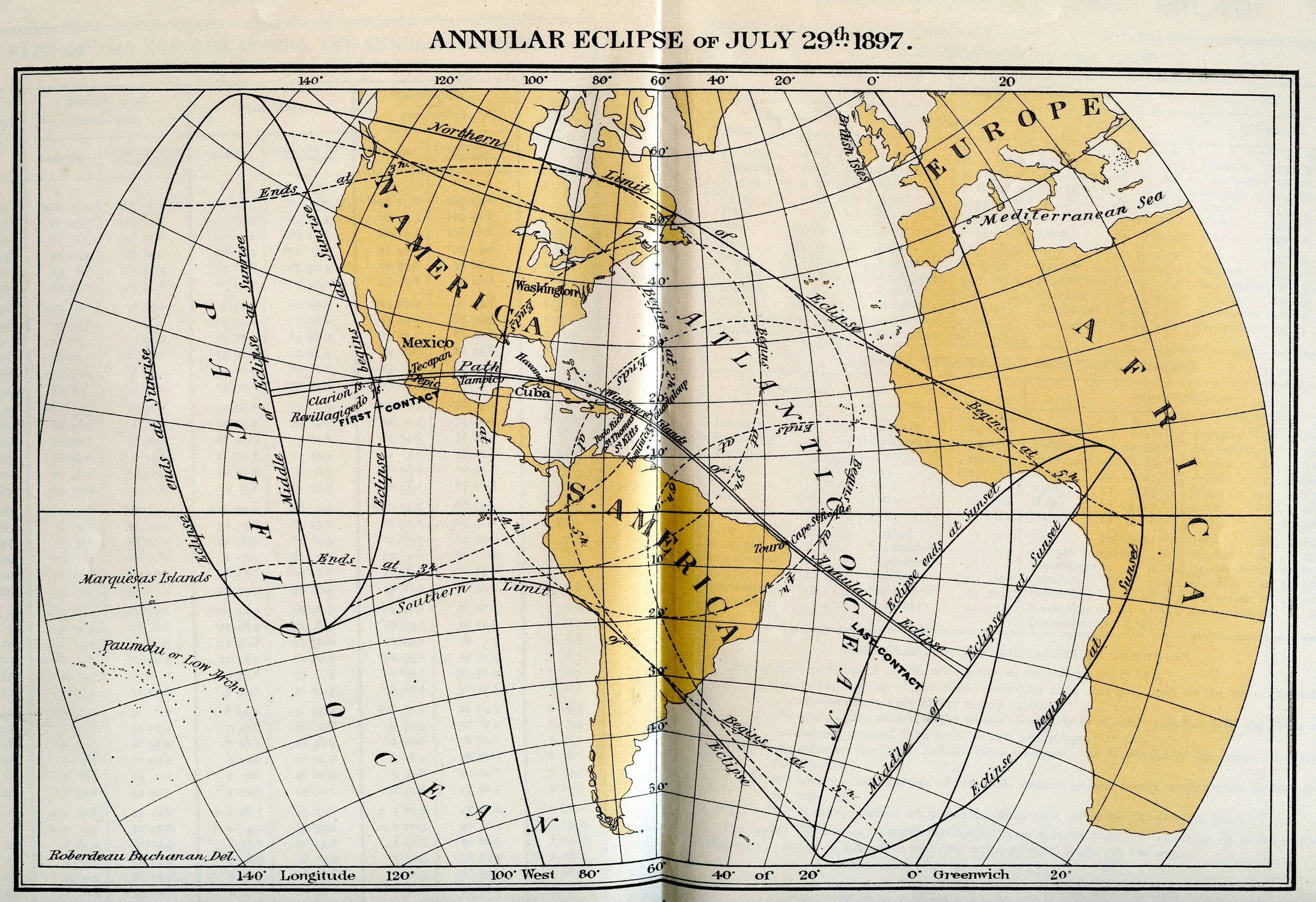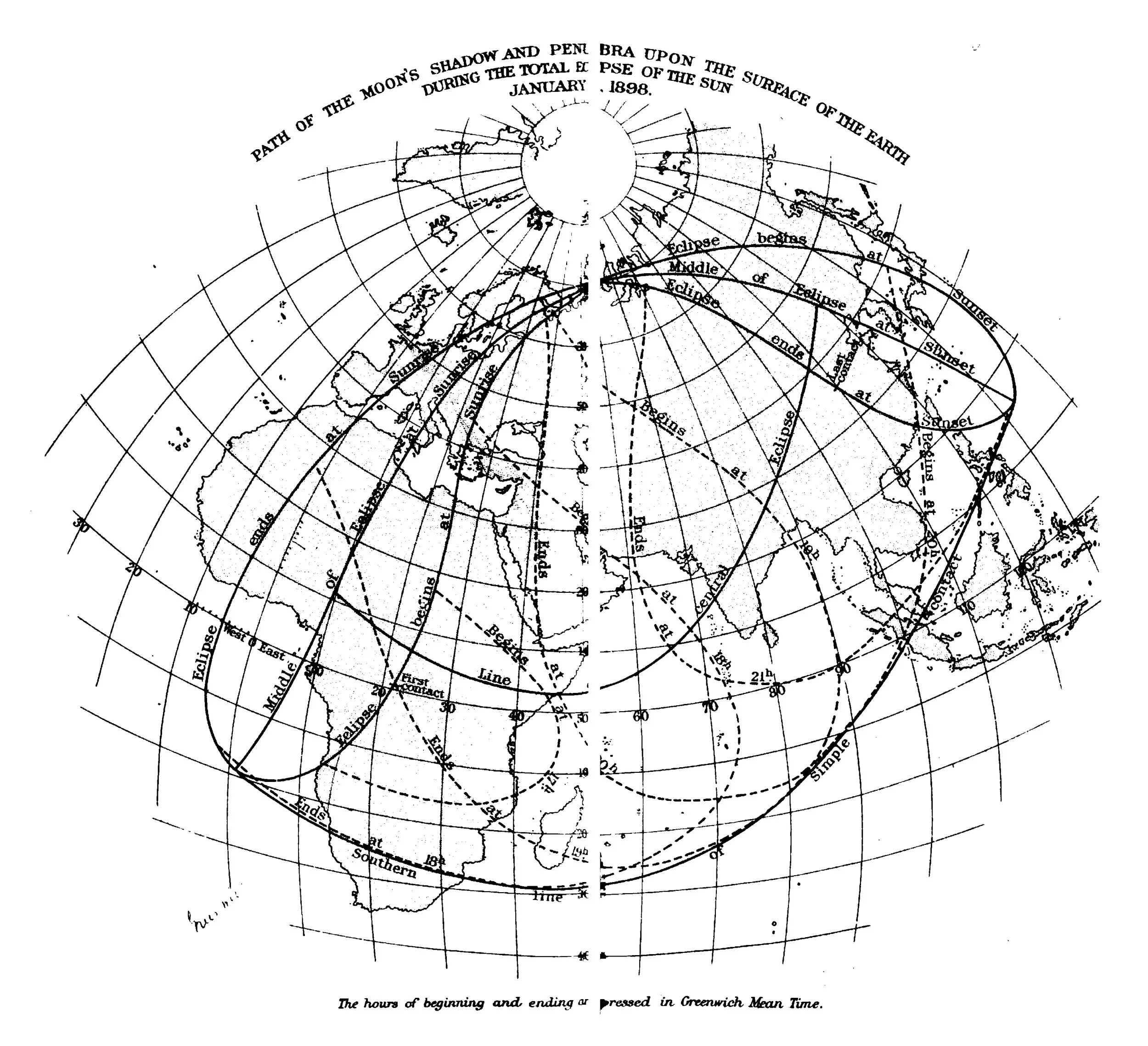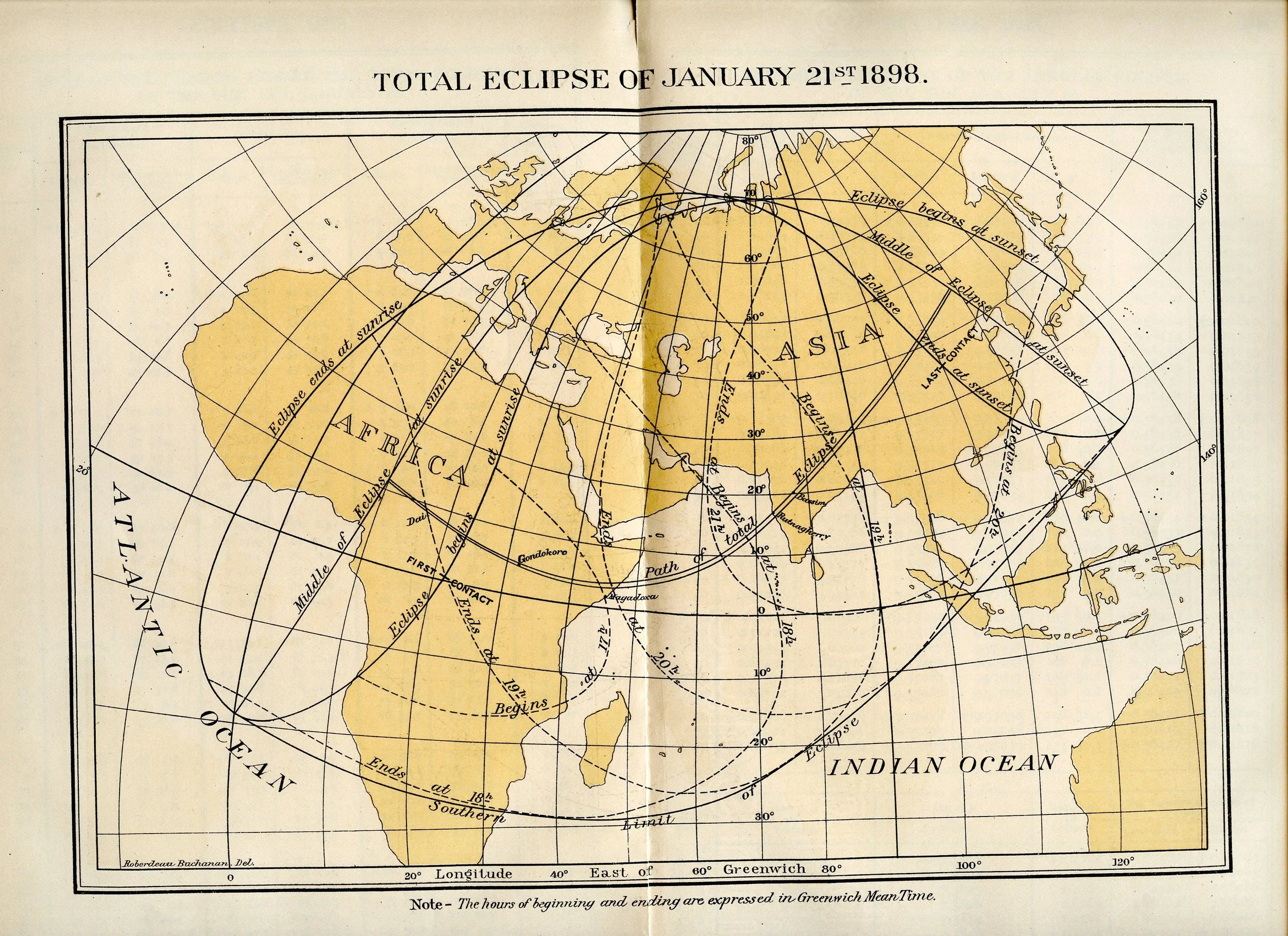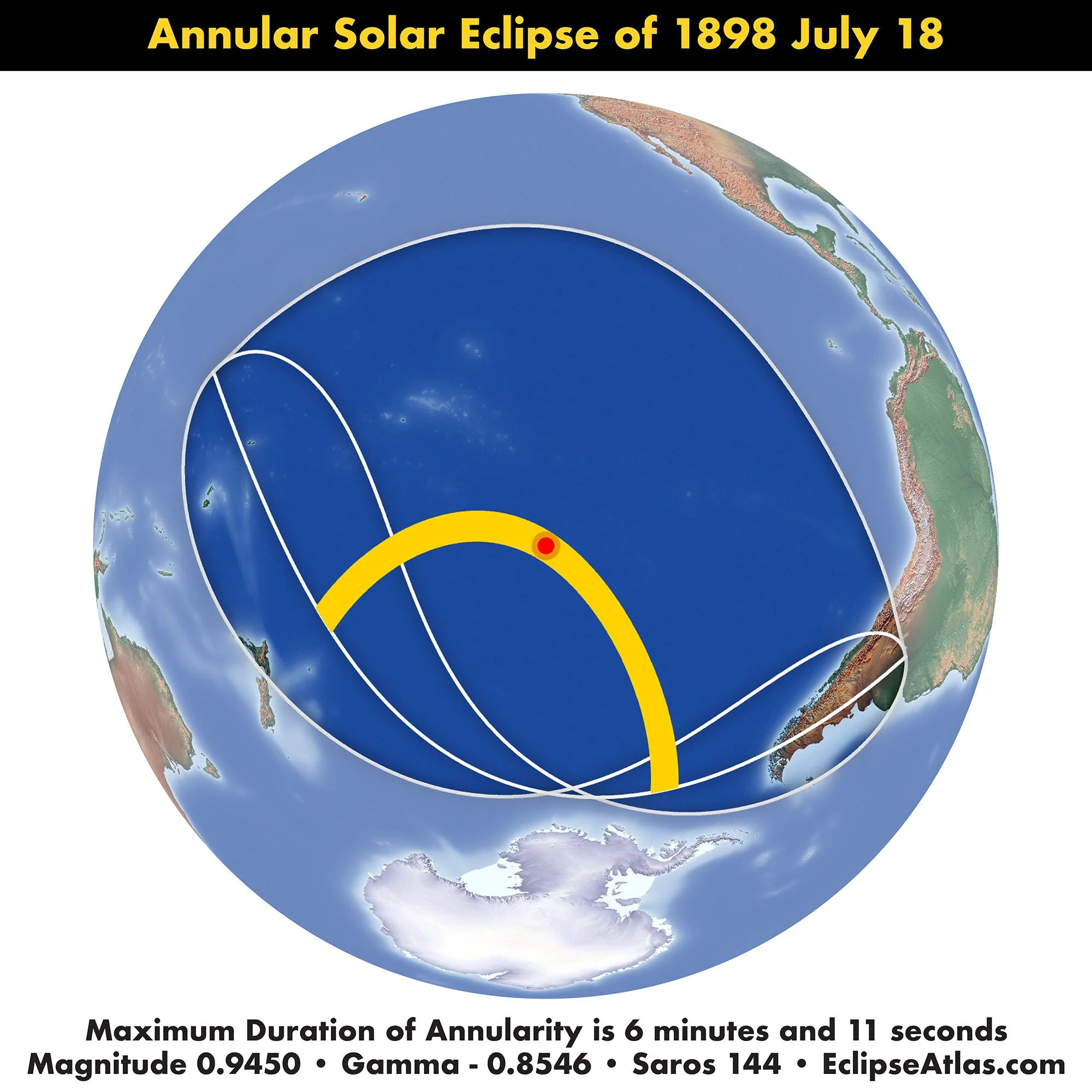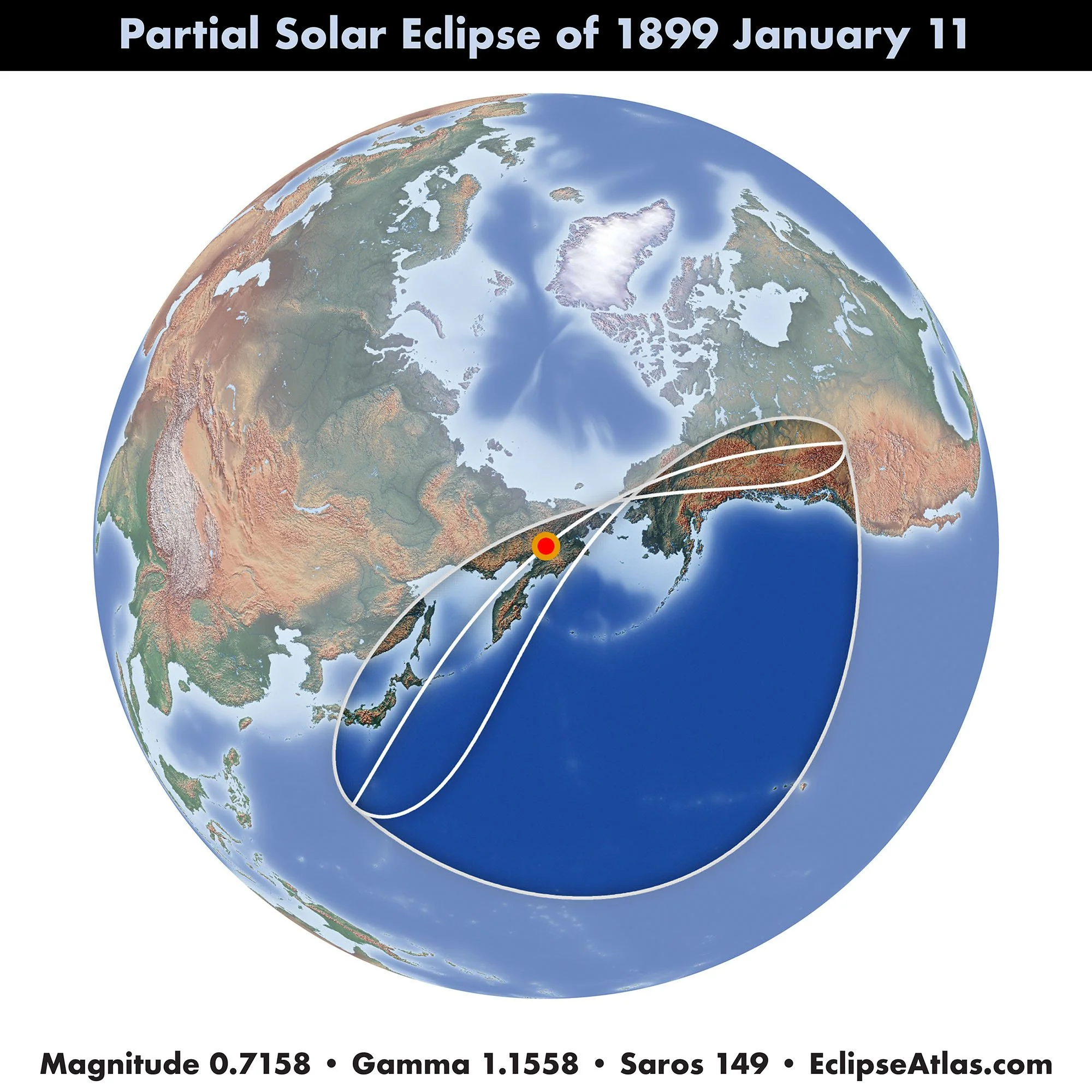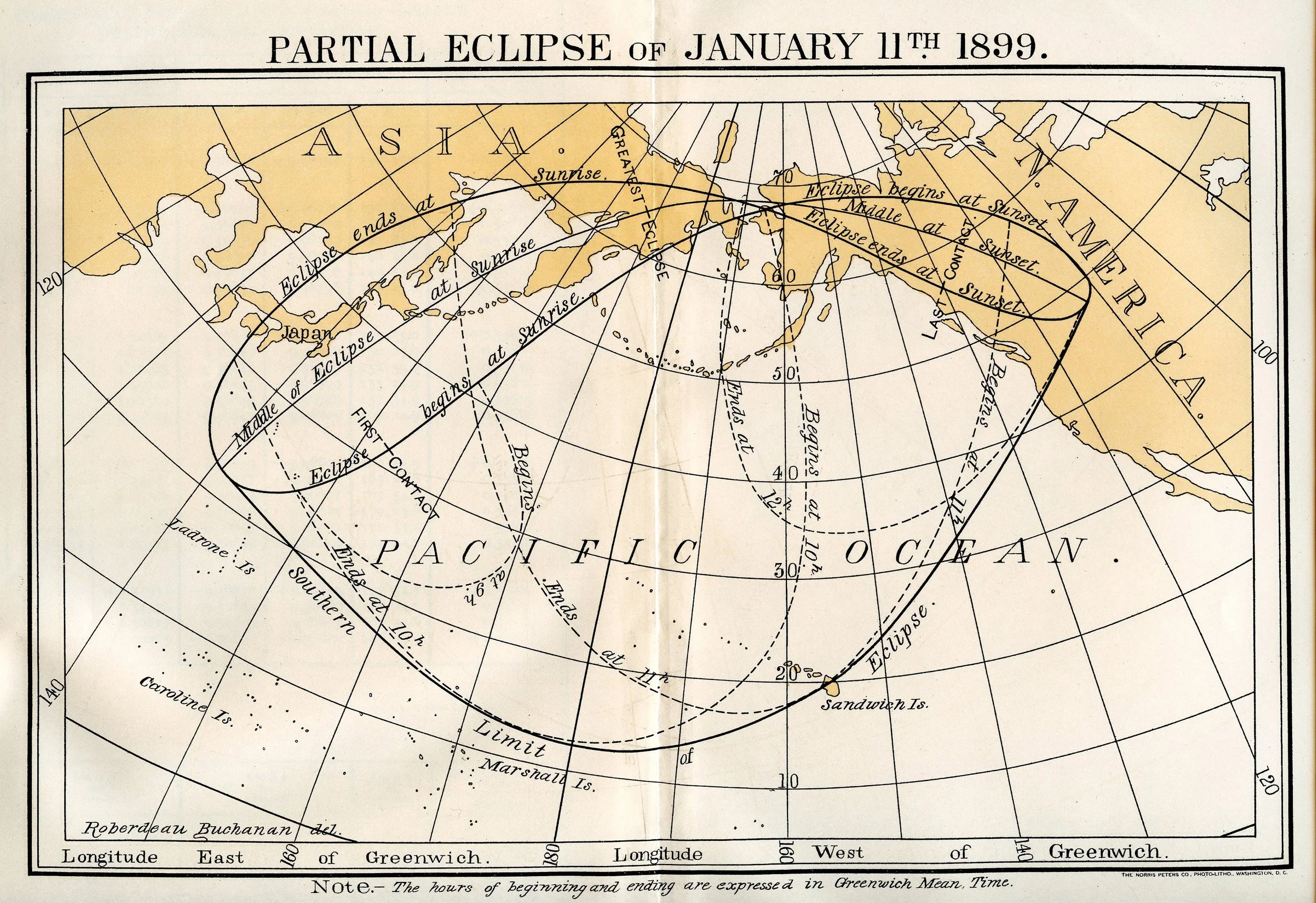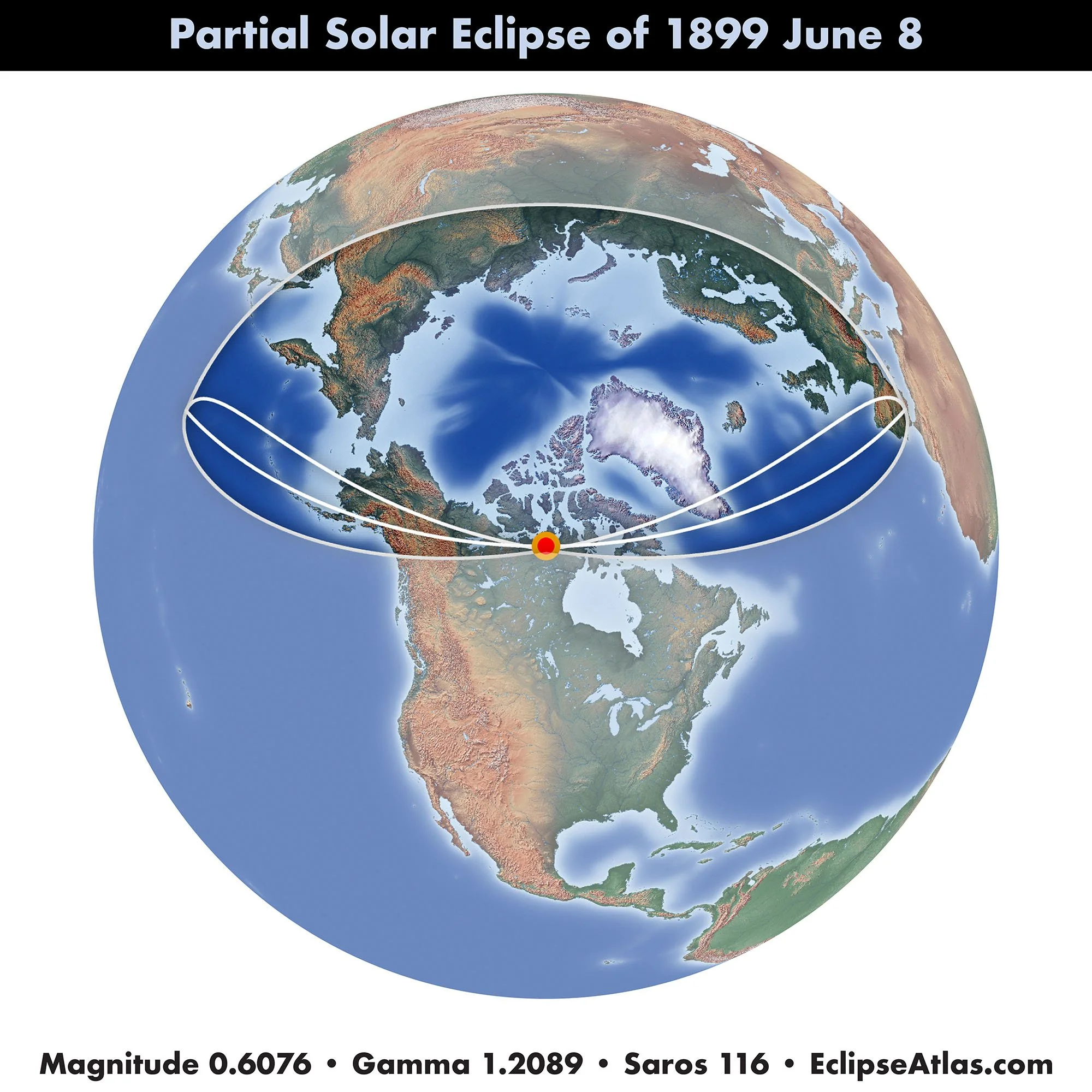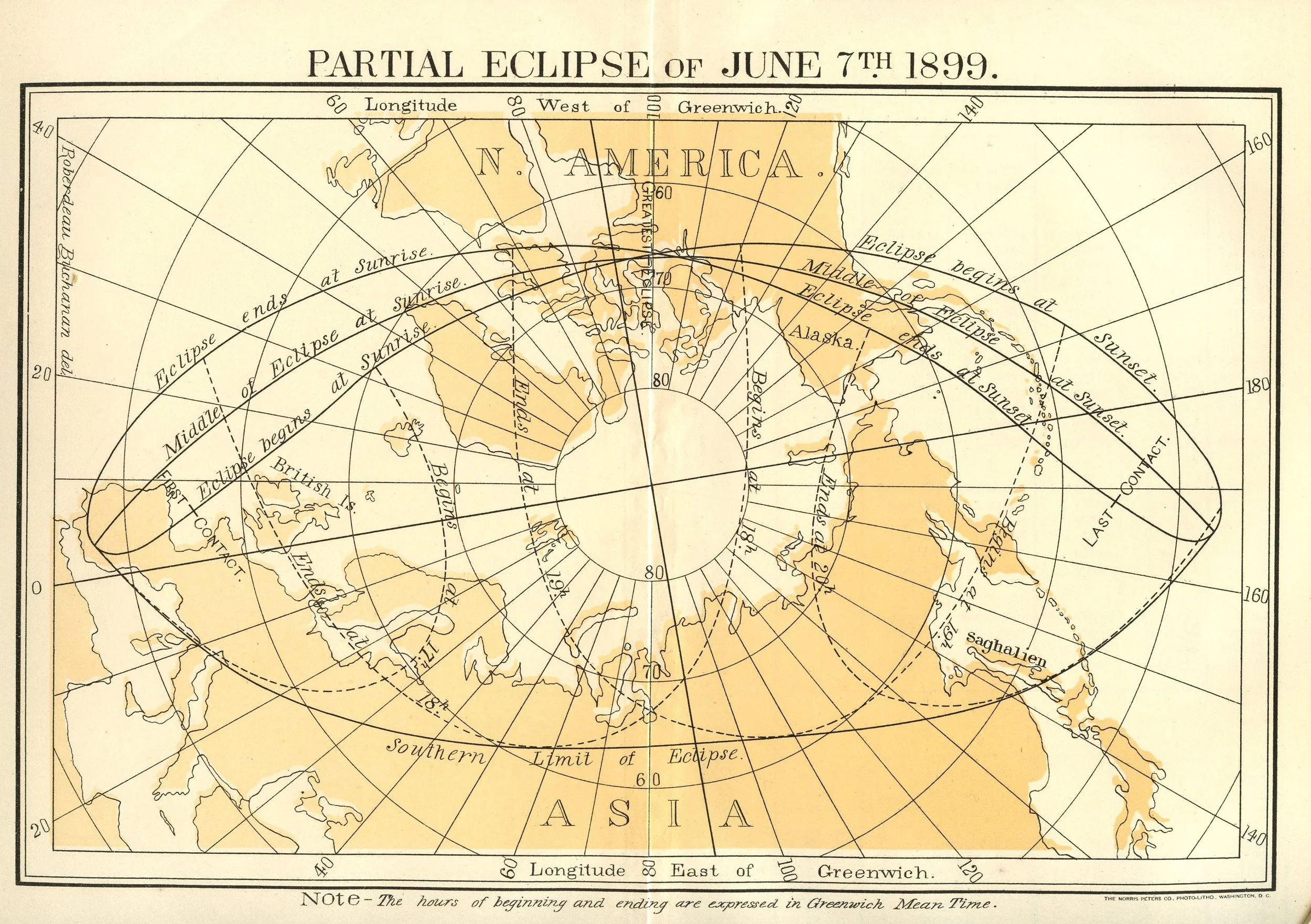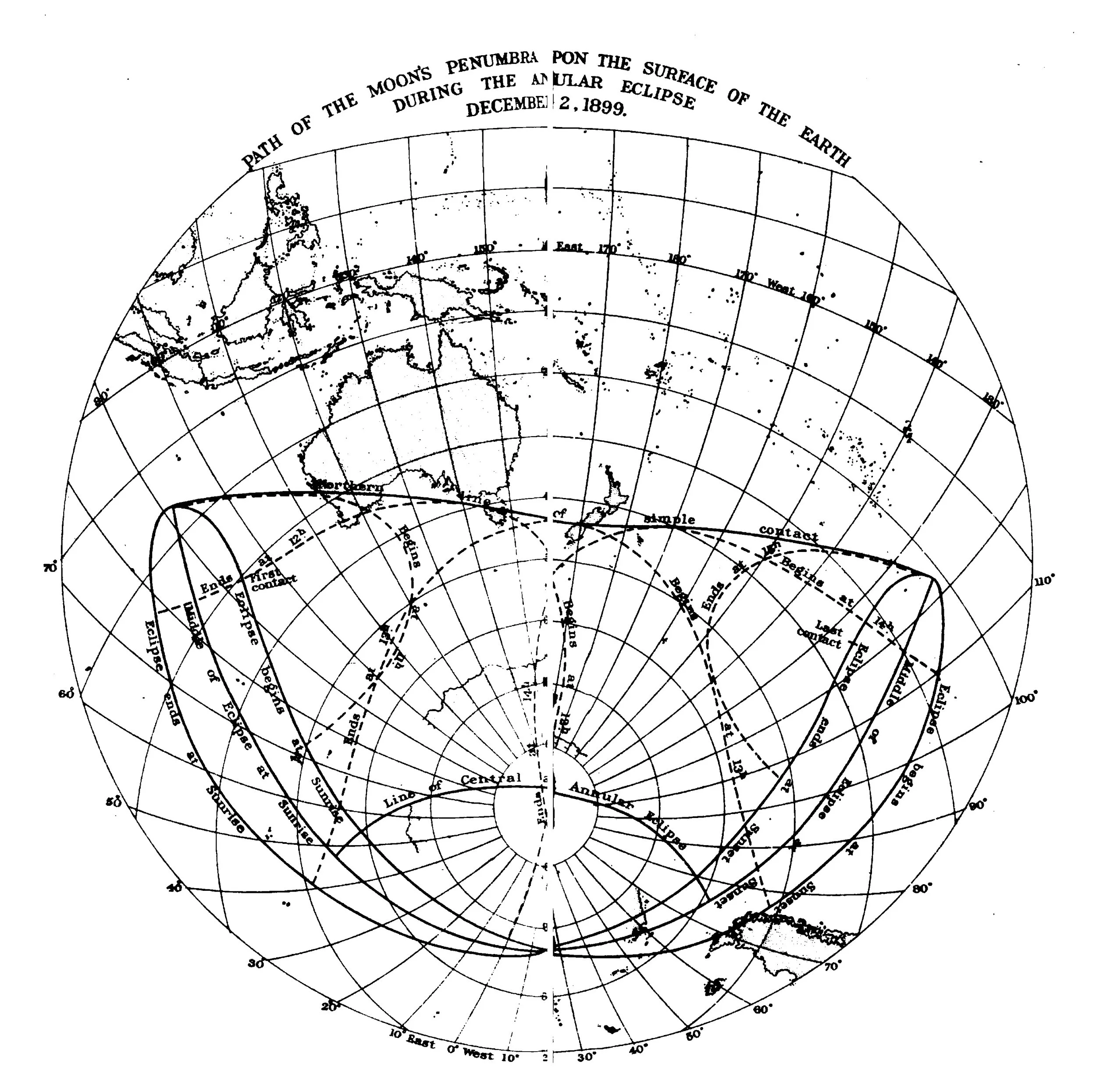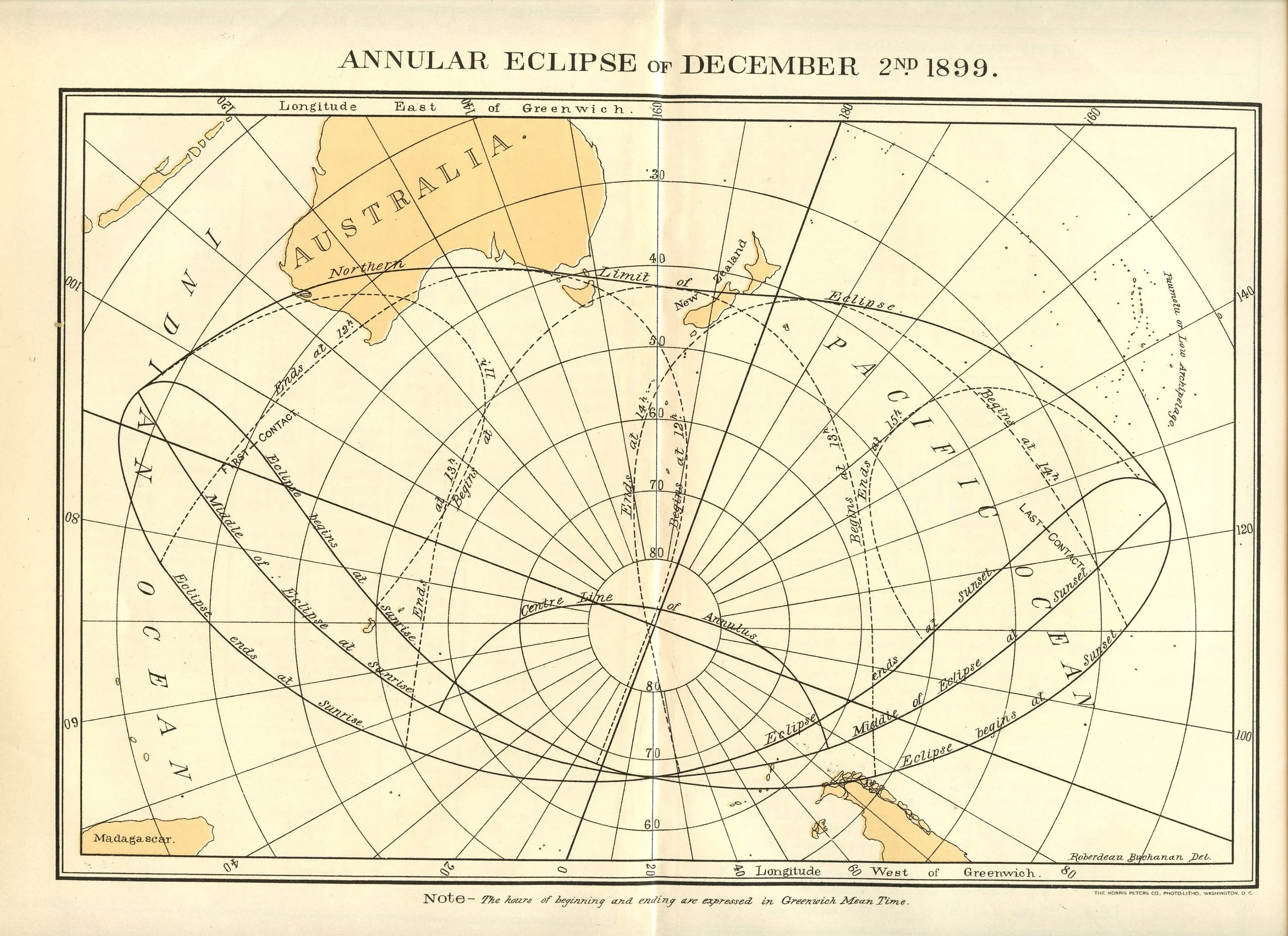Maps of Solar Eclipses from 1895 to 1899
In the late 19th century and early 20th century, a subject of intense scrutiny was the search for new planets within the orbit of Mercury. Total solar eclipses were of course an ideal opportunity to investigate this possibility.
An intramercurial planet was hypothesized by Francois Arago, directory of the Paris Observatory, because of anamolies in the orbit of Mercury (which were later explained by Einstein’s theory of relativity). This purported planet was named Vulcan and was the subject of searches during several solar eclipses. During the eclipse of 1878 July 29, two trained observers claimed to have seen Vulcan near the sun.
When you examine the U.S. Naval Observatory eclipse supplements of the time, you can find several maps like this which were used by astronomers to search for Vulcan. After a number of attempts, Vulcan was never confirmed to exist.
Connaissances des Temps Éclipse partielle de Soleil du 25 mars 1895. Collection of Michael Zeiler
American Ephemeris and Nautical Almanac Partial Eclipse of March 25th 1895. books.google.com
Connaissances des Temps Éclipse partielle de Soleil du 20 août 1895. Collection of Michael Zeiler
American Ephemeris and Nautical Almanac Partial Eclipse of August 20th 1895. books.google.com
The Nautical Almanac and Astronomical Ephemeris Path of the Moon’s Penumbra upon the Surface of the Earth during the Partial Eclipse of the Sun, August 20, 1895. books.google.com
Connaissances des Temps Éclipse partielle de Soleil du 18 septembre 1895. Collection of Michael Zeiler
American Ephemeris and Nautical Almanac Partial Eclipse of September 18th 1895. books.google.com
The Nautical Almanac and Astronomical Ephemeris Path of the Moon’s Penumbra upon the Surface of the Earth during the Partial Eclipse of the Sun, September 18, 1895. books.google.com
American Ephemeris and Nautical Almanac Annular Eclipse of February 13th 1896. Scanned at Federal Depository Library, UC Berkeley
Joseph Norman Lockyer Recent and Coming Eclipses Map of Northern Norway, &c., showing line of shadow during total eclipse of the sun, 9th August 1896. Scanned at USNO James Melville Gillis Library
American Ephemeris and Nautical Almanac Total Eclipse of August 8th 1896 Scanned at Federal Depository Library, UC Berkeley
Judd & Co., Nautical Almanac Circular? Path of the Moon's Shadow during the Total Eclipse of the Sun, 1896 August 8-9 Eastern Section Courtesy of Sheridan Williams
Judd & Co., Nautical Almanac Circular? Path of the Moon's Shadow during the Total Eclipse of the Sun, 1896 August 8-9 Western Section Courtesy of Sheridan Williams
Camille Flammarion for New York Herald The Great Eclipse From Papers of Roberdeau Buchanan Scanned at USNO James Melville Gillis Library
Philadelphia Press From Papers of Roberdeau Buchanan Scanned at USNO James Melville Gillis Library
Papers of Roberdeau Buchanan Scanned at USNO James Melville Gillis Library
A. C. D. Crommelin Journal of the British Astronomical Association books.google.com
A. C. D. Crommelin Journal of the British Astronomical Association books.google.com
Mabel Loomis Todd Total Eclipses of the Sun Path of the Next Total Eclipse, 9th August 1896 books.google.com
San Francisco Call The Moon will cast her Shadow on the Earth's Luminary Chronicling America, chroniclingamerica.loc.gov
The Morning Times Sun is Good to the East Chronicling America, chroniclingamerica.loc.gov
New York Tribune Where the Coming Eclipse will be Visible Chronicling America, chroniclingamerica.loc.gov
American Ephemeris and Nautical Almanac Annular Eclipse of February 1st 1897 Scanned at Federal Depository Library, UC Berkeley
The Nautical Almanac and Astronomical Ephemeris Path of the Moon’s Penumbra upon the Surface of the Earth during the Annular Eclipse of the Sun, February 1, 1897. books.google.com
Papers of Roberdeau Buchanan From Small Almanac Scanned at USNO James Melville Gillis Library
The Nautical Almanac and Astronomical Ephemeris Path of the Moon’s Penumbra upon the Surface of the Earth during the Annular Eclipse of the Sun, July 29, 1897. books.google.com
William F. Rigge The Graphic Construction of Eclipses and Occultations books.google.com
American Ephemeris and Nautical Almanac Annular Eclipse of July 29th 1897 Scanned at Federal Depository Library, UC Berkeley
The Nautical Almanac and Astronomical Ephemeris Path of the Moon’s Penumbra upon the Surface of the Earth during the Partial Eclipse of the Sun, August 20, 1895. books.google.com
Joseph Norman Lockyer Recent and Coming Eclipses The central line of Eclipse in Western India in 1898. Scanned at USNO James Melville Gillis Library
American Ephemeris and Nautical Almanac Total Eclipse of January 21st 1898 Scanned at Federal Depository Library, UC Berkeley
Wyman & Sons, Nautical Almanac Circulars 16 Path of the Moon's Shadow during the Total Eclipse of the Sun 1898 Jan. 21-22. Courtesy of Sheridan Williams
American Ephemeris and Nautical Almanac Annular Eclipse of July 18th 1898. Scanned at Federal Depository Library, UC Berkeley
American Ephemeris and Nautical Almanac Partial Eclipse of January 11th 1899. Scanned at Federal Depository Library, UC Berkeley
Connaissances des Temps Éclipse partielle de Soleil du 11 janvier 1899. gallica.bnf.fr
American Ephemeris and Nautical Almanac Partial Eclipse of June 7th 1899. Scanned at Federal Depository Library, UC Berkeley
Connaissances des Temps Éclipse partielle de Soleil du 7 juin 1899. gallica.bnf.fr
The Nautical Almanac and Astronomical Ephemeris Path of the Moon’s Penumbra upon the Surface of the Earth during the Annular Eclipse of the Sun, December 2, 1899. books.google.com
American Ephemeris and Nautical Almanac Annular Eclipse of December 2nd 1899. Scanned at Federal Depository Library, UC Berkeley

